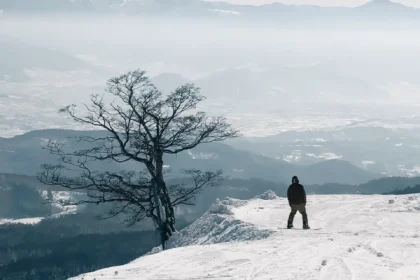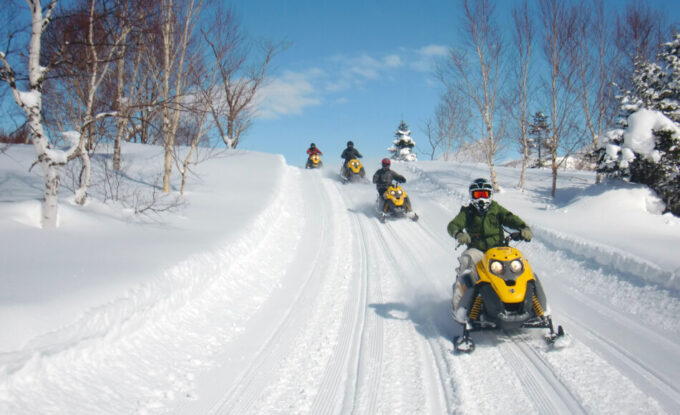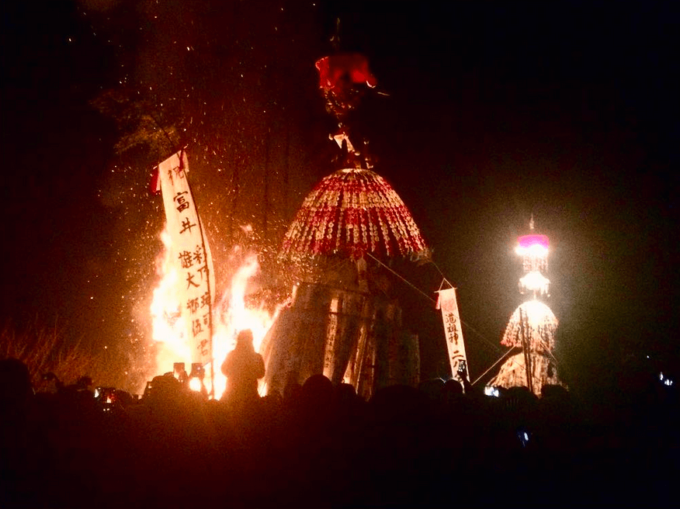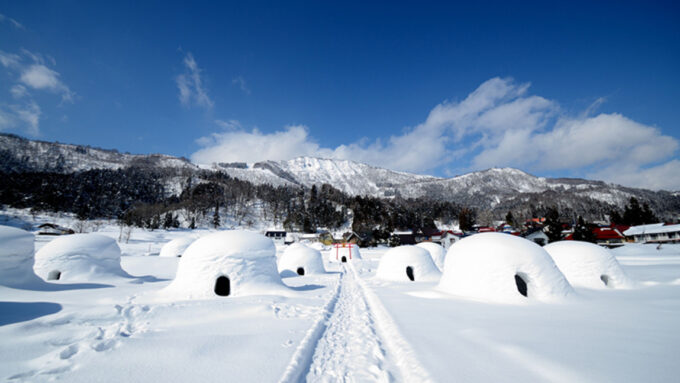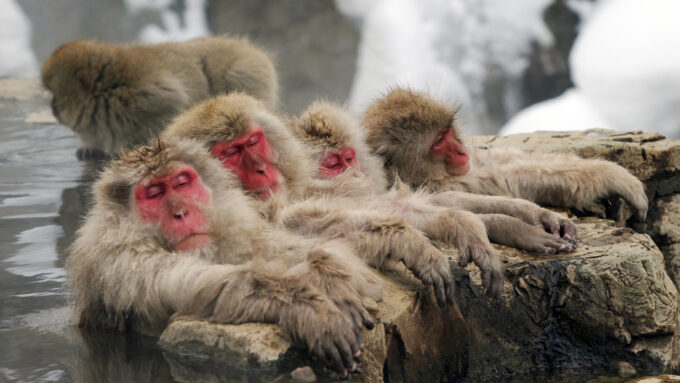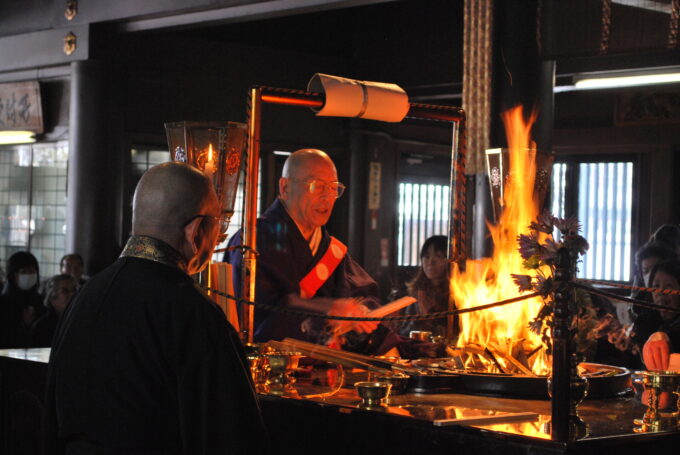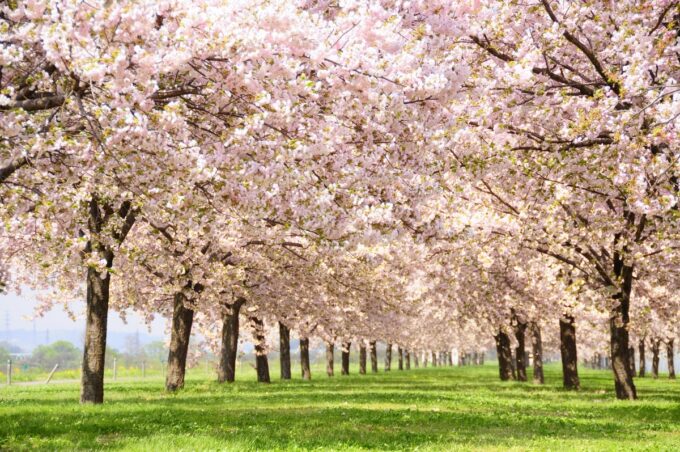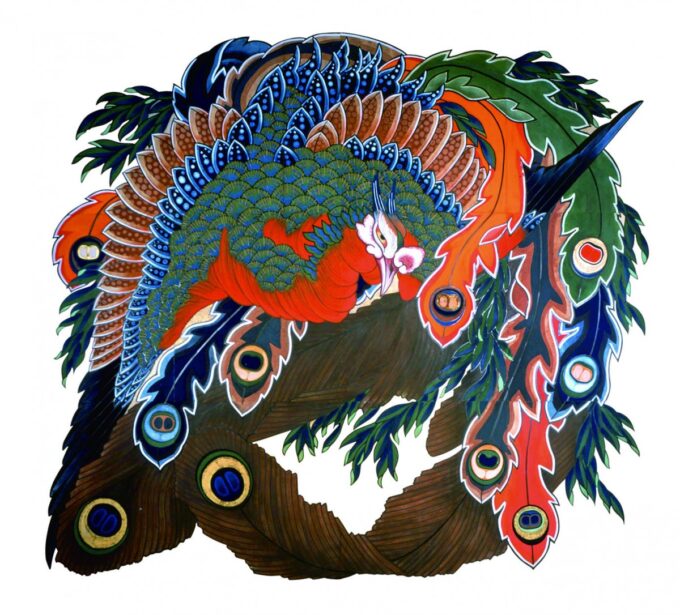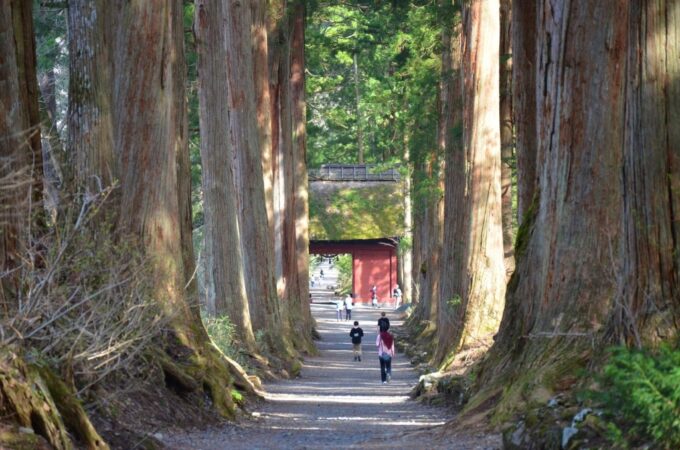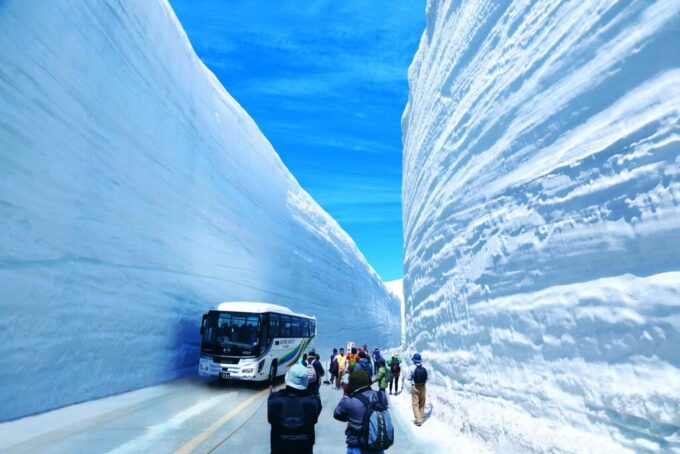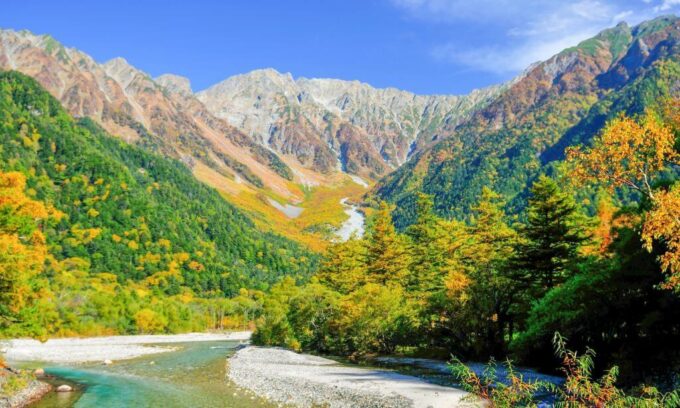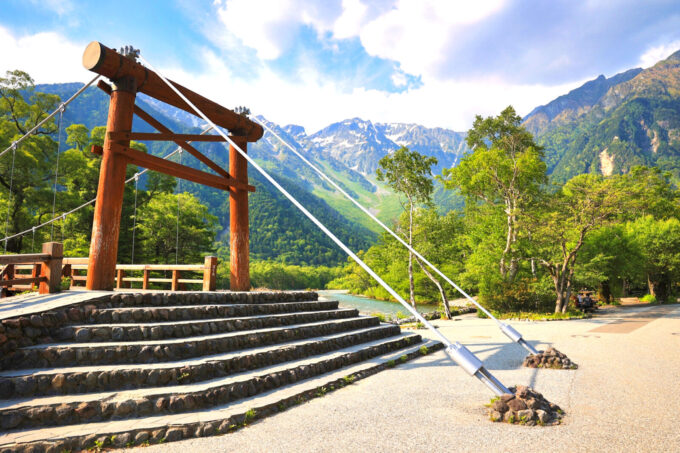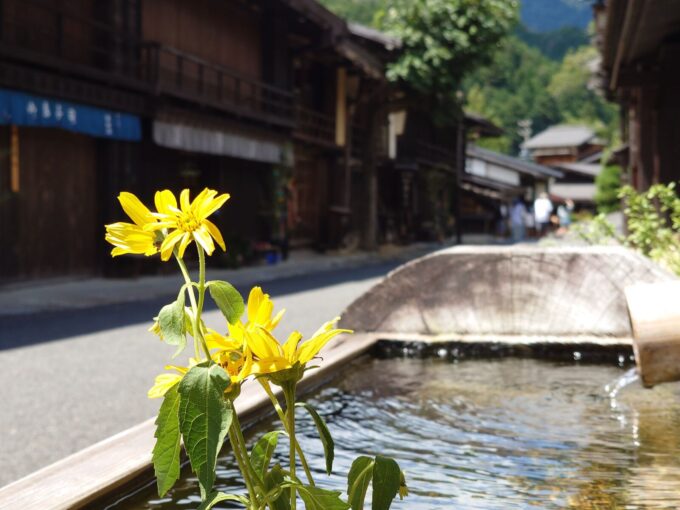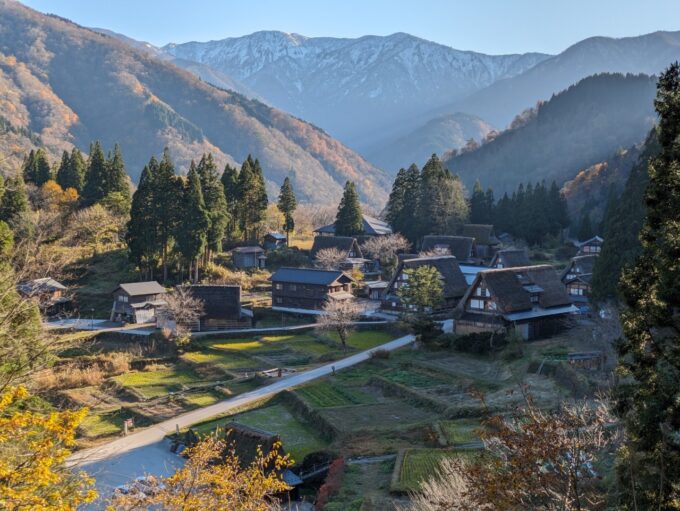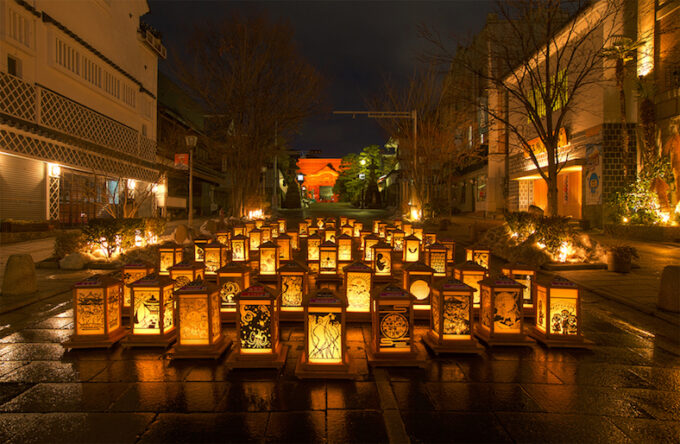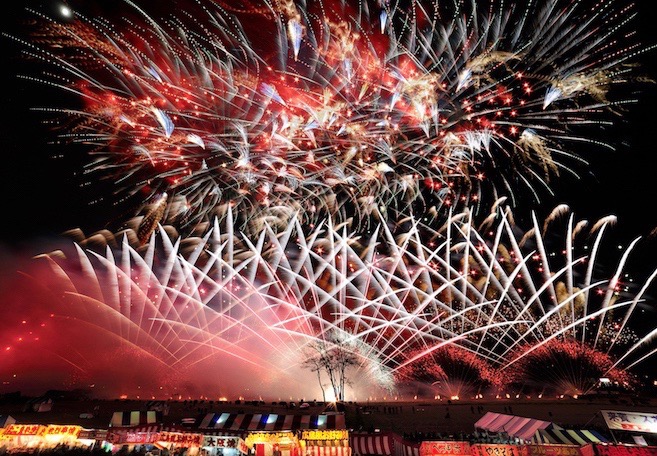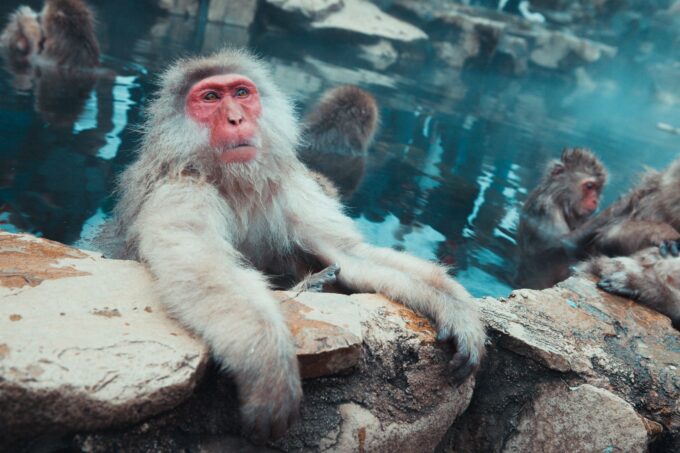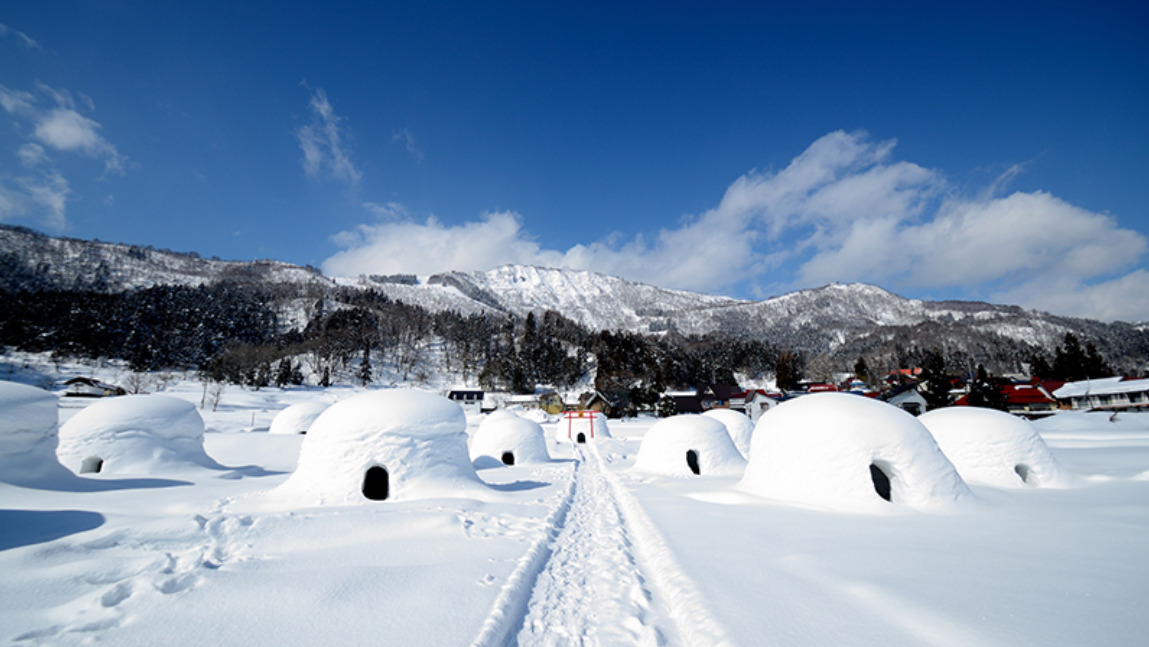
Located one hour to the north of Nagano City, Madarao is a small resort but one with a big reputation. Boasting an average annual snowfall of 13 metres, Madarao is known for its big powder bowls and fantastic tree runs. Whereas many Japanese resorts restrict and even ban going off-piste, Madarao actively encourages it, making it increasingly popular for keen powderhounds. On this page you will find the following information:
— 25 Best Things to Do Around Madarao
— Where to Stay When Visiting Madarao
— Madarao Mountain Resort: The Stats & Facts
— Japan Ski Resorts: Everything You Need to Know
— Tours & Charters from Madarao
Madarao caters to all levels with 30 courses spread over 75 hectares of terrain and from 910 to 1350 metres elevation. But don’t the numbers mislead you. Madarao’s fantastic powder and tree runs make it worth visiting, particularly intermediate and advanced snowboarders who will love heading-off into the trees.
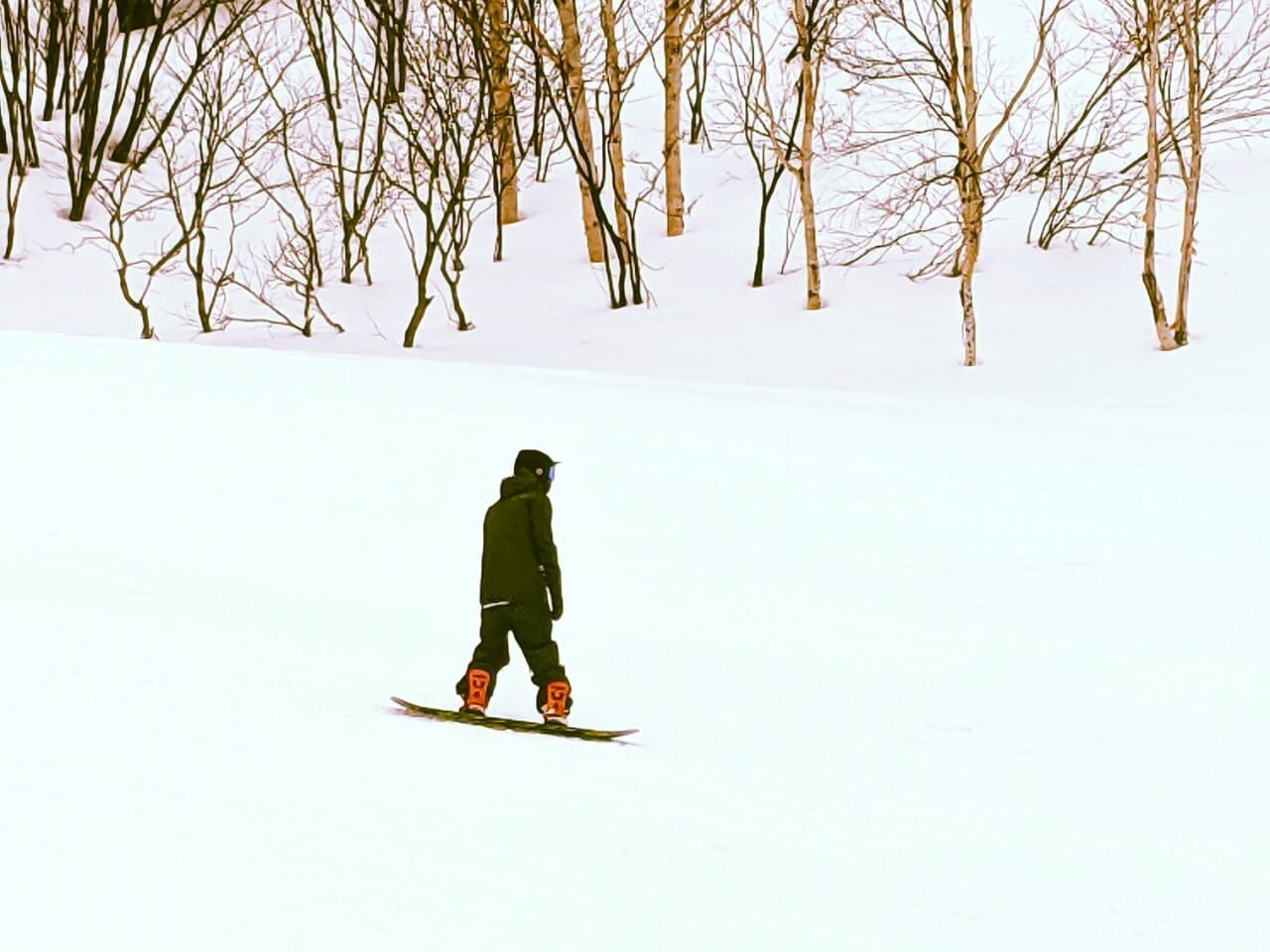
The resort backs on to Tangram Ski Circus, connected by the top ‘Adventure Aisle’ run. Visitors can choose lift passes for either resort or an all-mountain pass covering both. Together, the two resorts make-up a solid ski area that will keep you entertained for a couple of days. Skiers and snowboarders looking for enough to keep themselves entertained for a longer period should consider combining their time at Madarao with visits to nearby Nozawa Onsen and Togari.
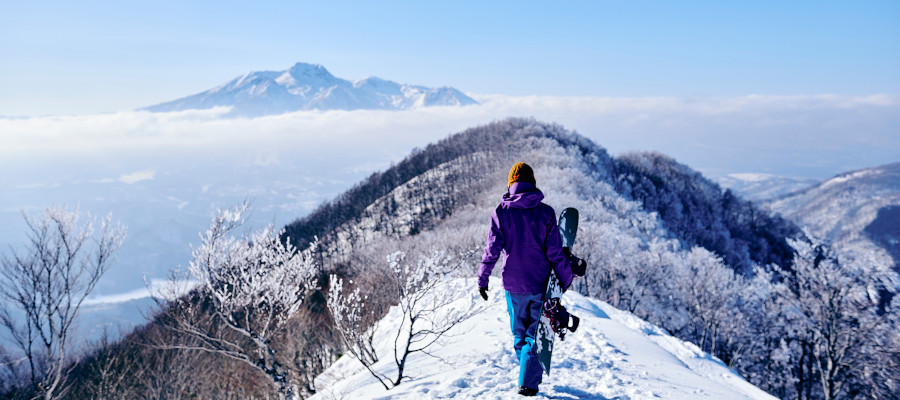
Based in Nagano and operating all year round, we are the region’s No.1 tour and charter operator. We offer both group and private tours to popular destinations in and around Madarao, and we can also arrange private tours and charters to any destination. As a registered travel agent, we can package transport, accommodation and more together so you save and get the most out of your time in Madarao – scroll to the bottom for details. Let's start with the obvious question:
WHERE IS MADARAO?
Located around 40KM or a 1-hour drive to the northeast of Nagano City and 275KM northwest of Tokyo (a 3.5-hour drive), Madarao Mountain Resort is within easy reach thanks to its proximity to Iiyama Station. Iiyama is a stop on the Hokuriku Shikansen line running from Tokyo to Kanazawa via Nagano, making it a convenient way to move to and from Madarao via the station. Local buses and taxis operate from Iiyama Station to Madarao in around 30-minutes, running more frequently in winter given the extra demand by visitors heading to the ski resort. Most famous for its deep snow in winter allowing for some of Nagano’s best off-piste skiing and snowboarding, Madarao is developing into an all-year-round destination as an increasing number of outdoor activities, accommodation and restaurants are popping-up each green season.
25 BEST THINGS TO DO AROUND MADARAO
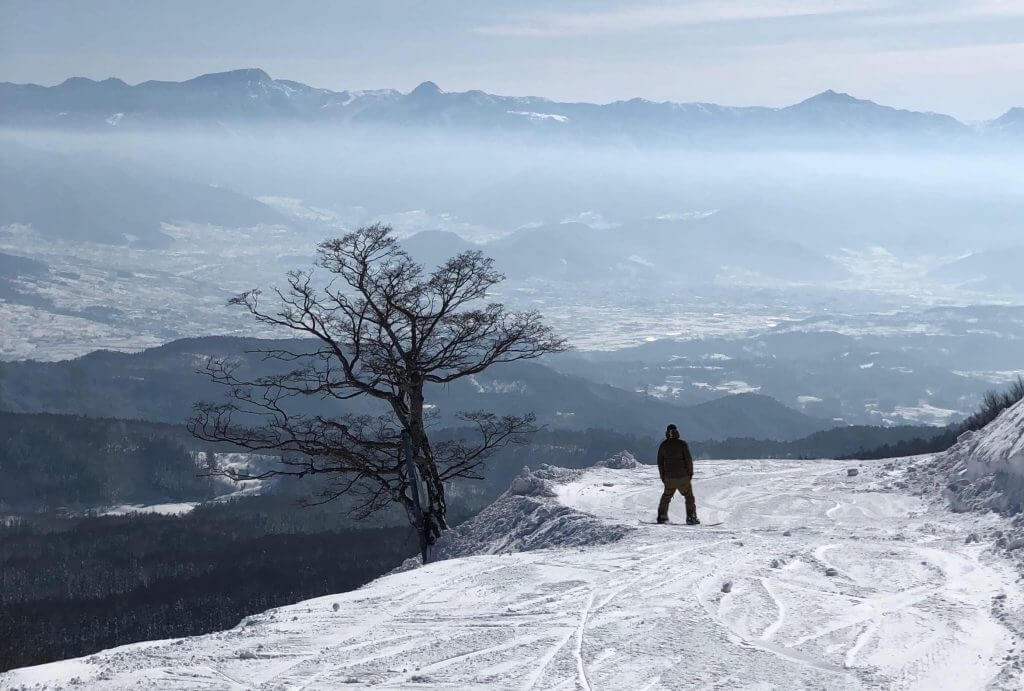

Madarao is a small but popular resort that wins lots of fans for its powder bowls, tree zones and backcountry. Connecting to Tangram Ski Circus, the combined resort offers visitors a nice alternative to nearby Nozawa Onsen Snow Resort. Outside of winter, Madarao offers visitors fantastic mountain-biking, hiking, access to lakes and other enjoyable activities in close to proximity to many of the region's best destinations. Here's our suggestion of things to do in the area:
1 / SKIING & SNOWBOARDING AT MADARAO MOUNTAIN RESORT / December to March
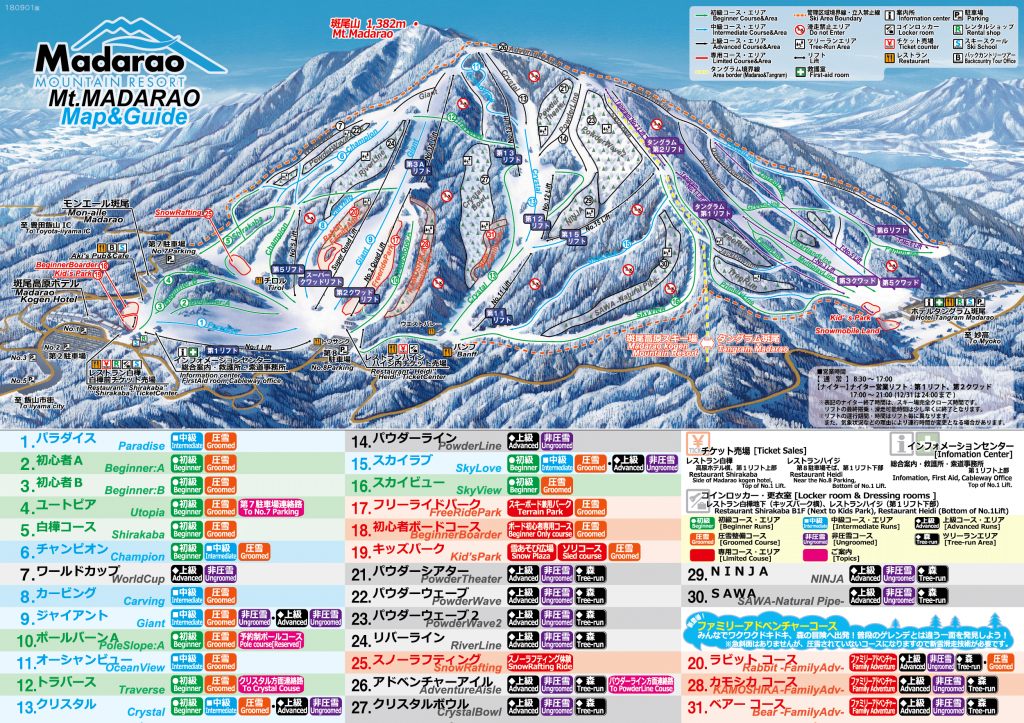
Let’s start with the obvious! Madarao’s reputation is built on its winters and chances are you’ll be visiting at that time to enjoy Madarao Mountain Resort. For beginners, the resorts central Giant and Champion courses will keep you entertained and are good trails on which to get your confidence. For beginners and advanced boarders and skiers, head up top to the Ocean View, Power Line and Crystal run. But it’s the Crystal Bowl, Powder Theater and Powder Waves tree runs that will really get your attention. Talk to your ski lodge operator and ask where the best powder is waiting.
2 / DROP INTO TANGRAM SKI CIRCUS / December to March
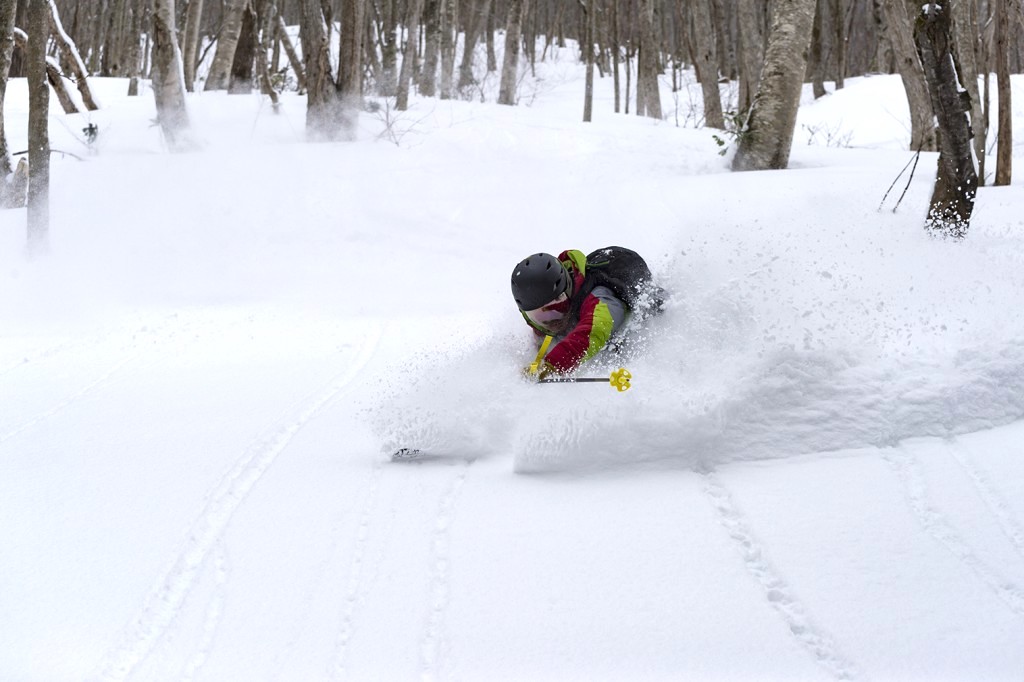
Connected to Madarao via the Adventure Aisle run – accessed via Chairlift No.13 – Tangram Ski Circus is in itself a small resort, and not enough to keep intermediate and advanced skiers and snowboarders entertained for long. But combined with Madarao – using an all-mountain pass – Tangram is that little bit of cream atop the cake! Facing north, Tangram is usually blessed with great snow and some challenging black runs at the top. Down the bottom, you’ll find a lot of flat, less-than-challenging green runs perfect for families or absolute beginners. Tangram is serviced by a large hotel and family activity areas, making it a good option for visitors with children or just wanting to enjoy the snow in a scenic area.
3 / NOZAWA, SHIGA & THE OTHER NAGANO RESORTS / December to April
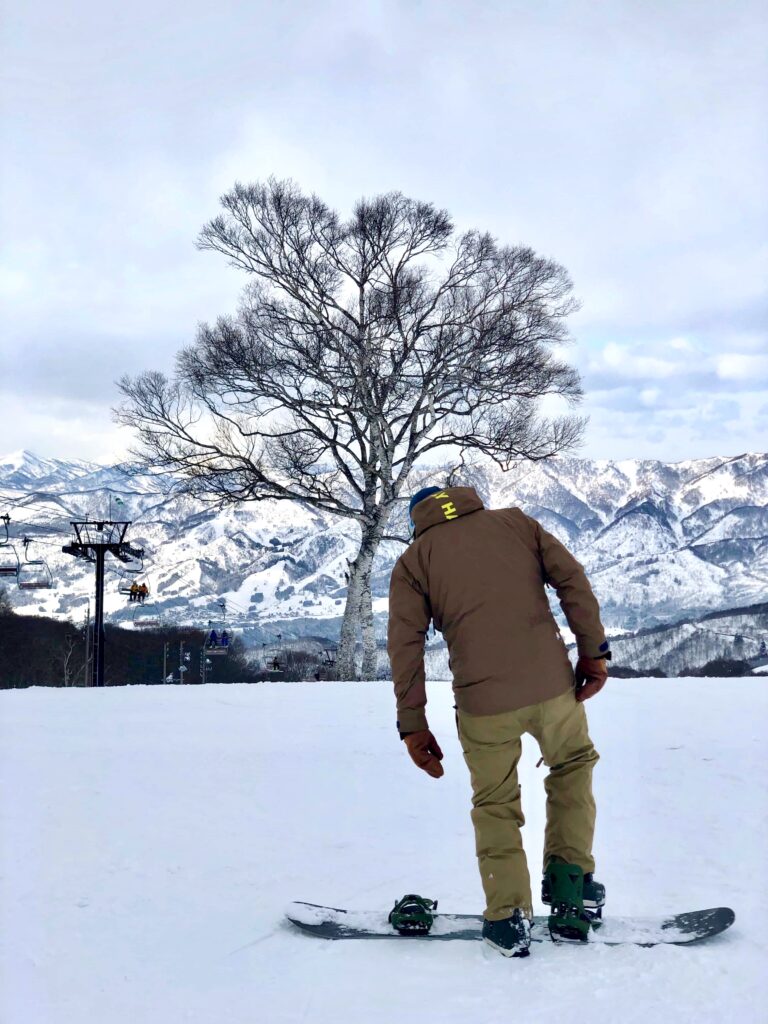

Just across the valley, Nozawa Onsen Snow Resort is one of Nagano’s most popular resorts. Notably larger than Madarao, Nozawa offers around 300 hectares of train between 565 and 1650 metres. Also known for its great powder and setup for snowboarders, Nozawa is a livelier resort than Madarao. Serviced by a large village full of accommodation, restaurants and bars and ‘onsen’ (hot springs), Nozawa’s reputation is as much based on what happens off the mountain.
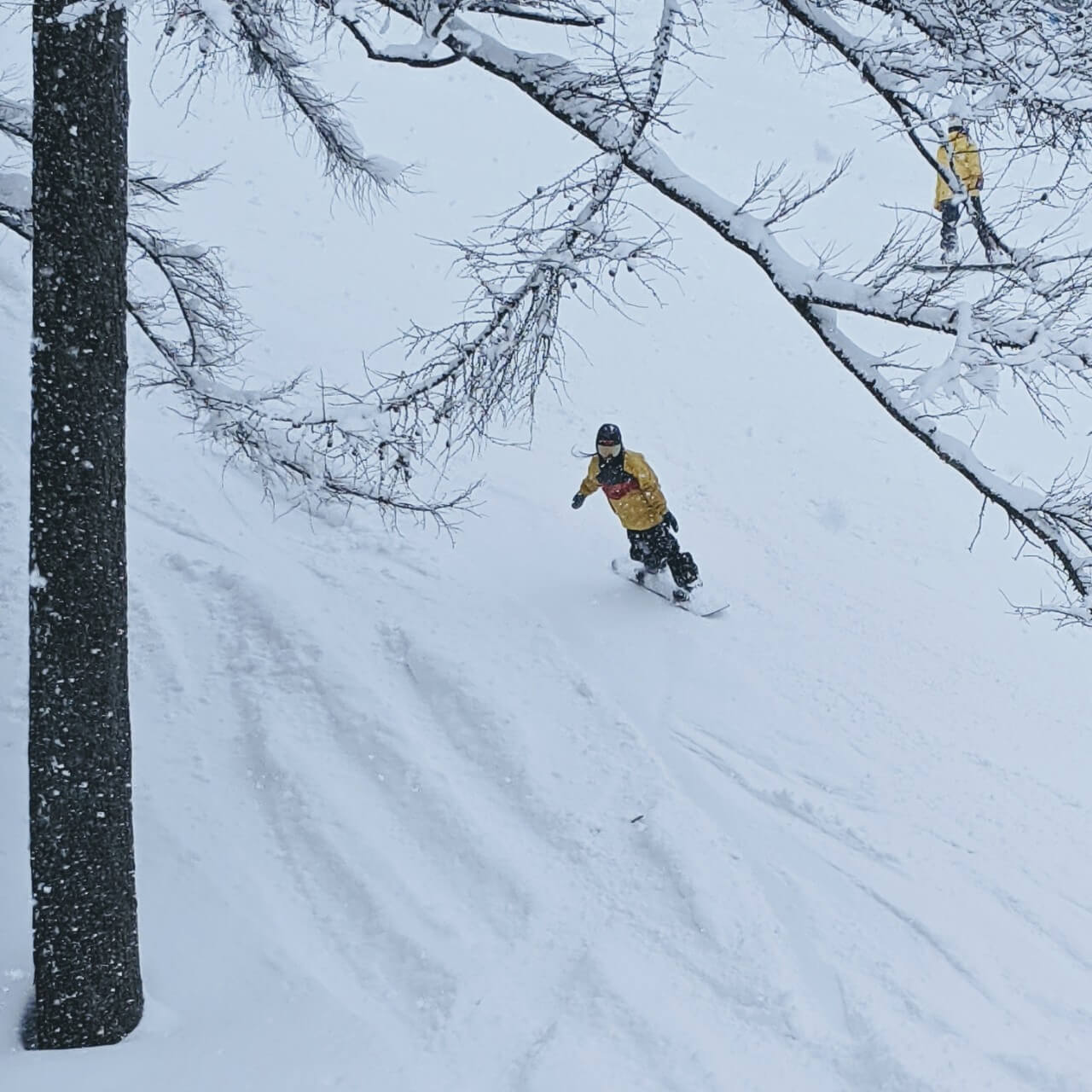
Only 45 to 60 minutes drive over the backside of Madarao, Myoko Kogen is quickly coming to the attention of international visitors who have discovered its epic powder. Located in the southern end of Niigata Prefecture and nearby the coast, Myoko receives a massive amount of snow each year. The resorts making-up the area collectively known as ‘Myoko Kogen’ are less developed than resorts such as Nozawa Onsen and have pretty liberal policies when it comes to backcountry, making Myoko the up-and-coming destination for international powderhounds.
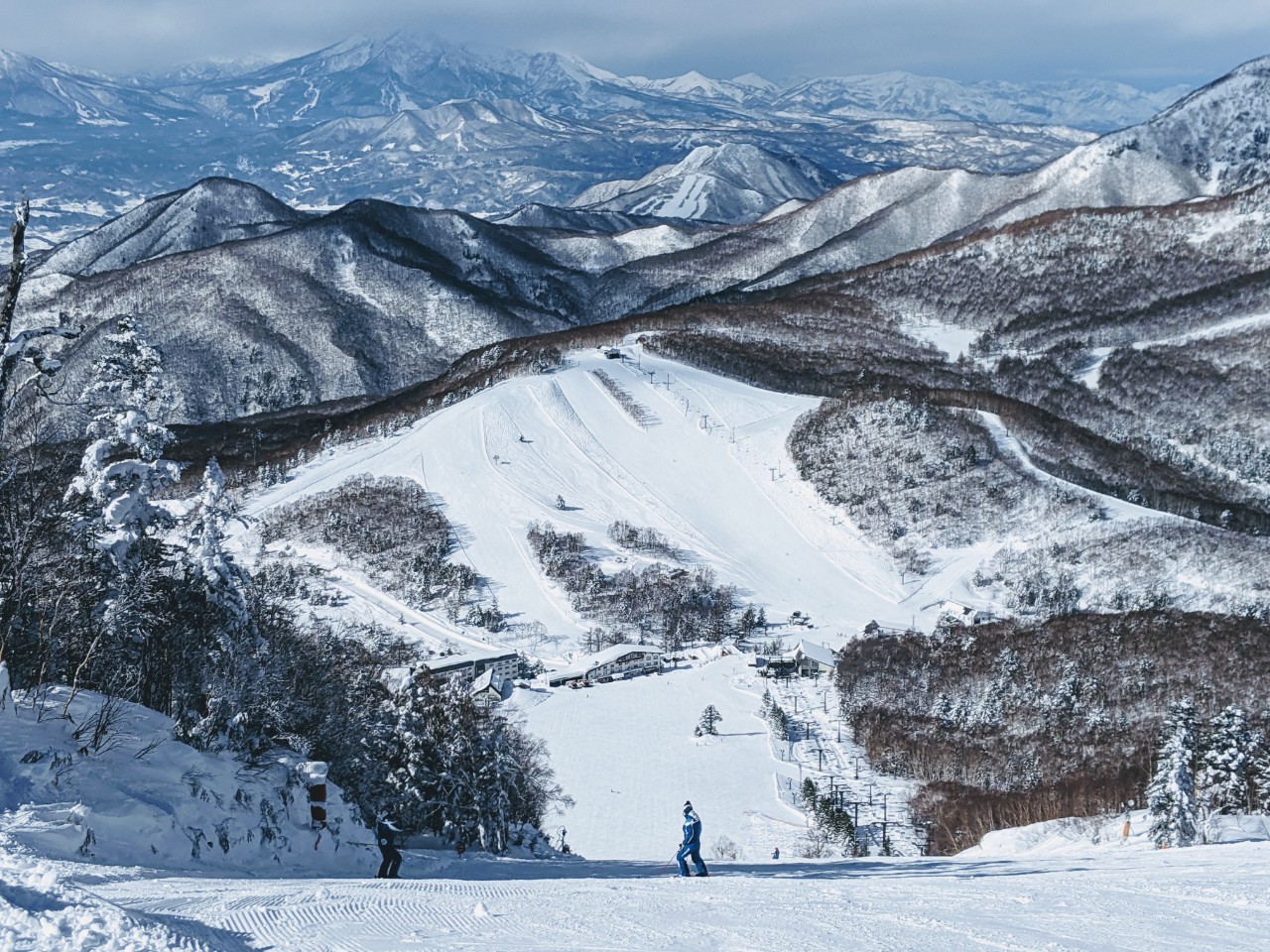
In the other direction – approximately 1 hour from Madarao – Shiga Kogen is Japan’s largest and highest ski resort. Boasting Nagano’s longest season and most reliable snow conditions – given its higher altitude and prevailing weather conditions – Shiga is another resort quickly coming to the attention of international visitors. Offering over 600 hectares of interconnected terrain, Shiga is likely to become much more poplar over the coming years so get there now while it’s still relatively quiet. And to the west of Myoko, the resorts of Hakuba Valley can lay claim to being Nagano's most international and popular. Plenty to keep you entertained on your winter adventure!
4 / WINTER ACTIVITIES IN SHIGA KOGEN / December to March
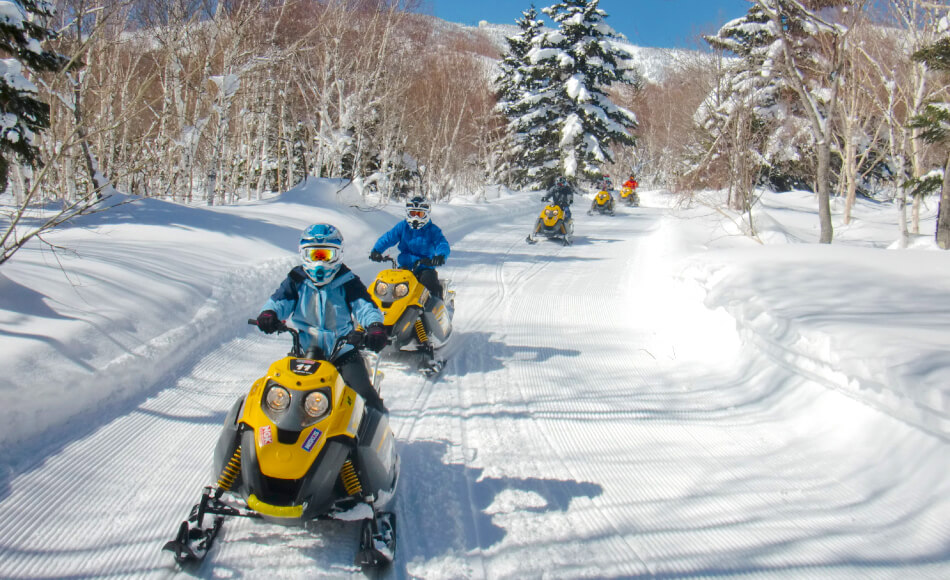
As Japan’s largest resort, Shiga offers visitors lots of things to do in addition to skiing and snowboarding. One of the most popular winter activities is snowmobiling in the Yakebitaiyama ski fields. Available from December until March, snowmobiling is led by a certified instructor who will first show you the ropes – how to operate the snowmobile safely – before leading you on a circuit in one of Shiga Kogen’s most picturesque areas. Snowmobiles can be used single ride (for anyone aged 13 years and over) or tandem (for anyone aged 6 years and over). For visitors wanting to make the most of their day in Shiga Kogen, our 1-Day Snow Monkeys & Snowmobiling in Shiga Kogen Tour combines a morning of snowmobiling with lunch at a nearby restaurant followed by early afternoon visit to the Jigokudani Monkey Park – a great way to experience two of Nagano’s best winter experiences.
*Unfortunately, we are unable to offer this tour for the 24/25 Season. We apologize for the inconvenience.
5 / NOZAWA ONSEN DOSOJIN (FIRE FESTIVAL) / January 15th
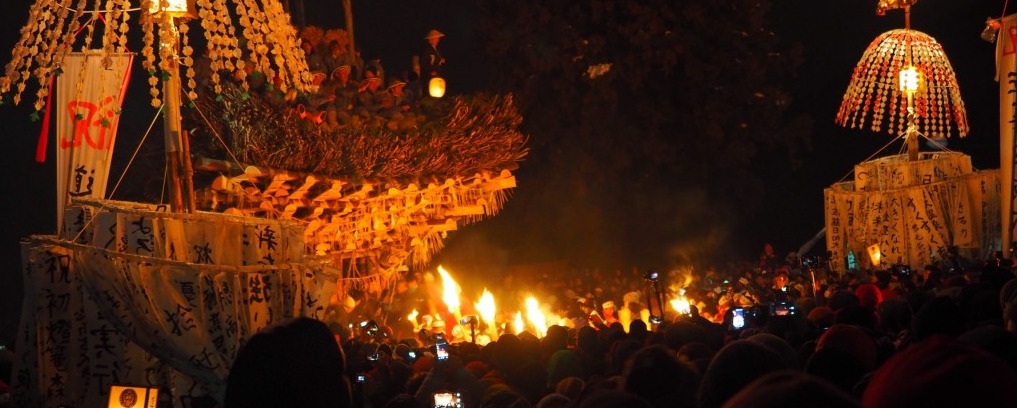
1-Day Tour From Hakuba & Nagano: Nozawa Fire Festival & Snow Monkeys
- Spots:
- Pick-up:
- Drop-off:
Taking place each year on January 15th, the Nozawa Onsen 'Dosojin Matsuri' is considered one of Japan’s great fire festivals. Readily accessible from Madarao, this raucous evening festival draws thousands of spectators who come to see residents erect, attack, defend, and ultimately burn a huge wooden shrine. With its roots firmly in native Shinto traditions, this is a lively and passionate display of important cultural beliefs. With pickup available at Hakuba and Nagano Station, we operate our popular 1-Day Nozawa Fire Festival & Snow Monkeys Tour every year. Combining an early afternoon visit to the monkeys followed by an early dinner and attendance at the festival, this popular tour is a great way of experiencing one of Nagano’s great cultural events.
6 / IIYAMA KAMAKURA SNOW FESTIVAL / Late January - Late February
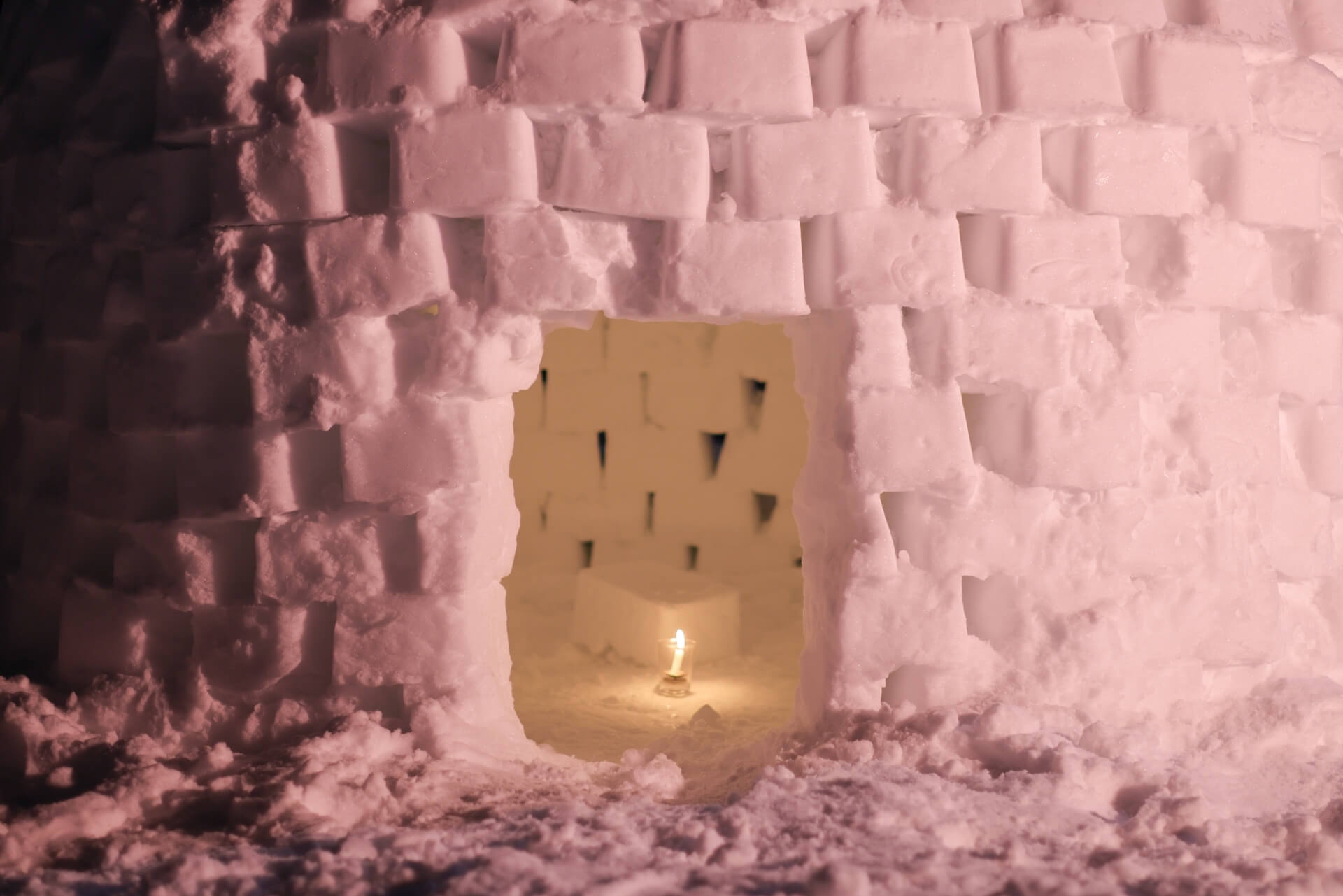
New Tour
1-Day Tour: Traditional Igloo "Kamakura" Festival & Snow Fun Activities
- Spots:
- Pick-up:
- Drop-off:
The Iiyama Kamakura Village see villagers construct 15 to 20 ‘kamakura’ (snow huts) from the surrounding snow fall. At night, the huts are illuminated by lanterns imbuing the area with a magical quality. Huts can be booked and then enjoy drinks and food inside with friends and family. On the second weekend of February, music performances, traditional games, snowshoeing walking and other activities are capped-off with evening fireworks – the highlight of the festival. The snow huts are accessible via Iiyama Station. Should you wish to book one, speak with your guesthouse owner are request they make the necessary arrangement.
7 / DISCOVER THE SPIRIT OF THE '98 GAMES / December to March
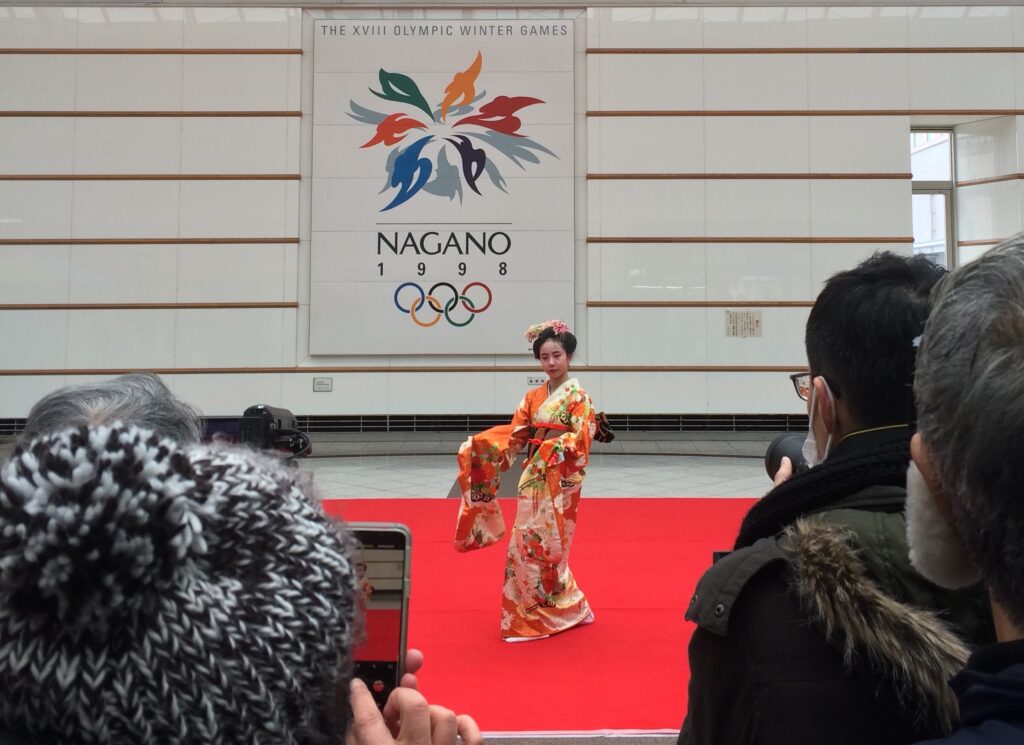
As host of the 1998 Winter Olympic Games, Nagano is proud of its Olympic heritage. While Madarao did not host any events, nearby Nozawa Onsen, Shiga Kogen and Hakuba to the west, did. Snowboarders in particular might be interested to note that the 1998 Olympics were the first at which snowboarding was included as a medalled event. All snowboarding competitions took place at Shiga, and today, those courses remain clearly marked and open – allowing you to challenge yourself. Our ‘Discover the spirit of the 1998 Winter Olympics’ page lists all resorts and venue in Nagano City that can still be visited including Nagano City’s M-Wave, home to the Olympic Museum it is open every day of the year and admission is free.
8 / VISIT THE JIGOKUDANI MONKEY PARK / all year round
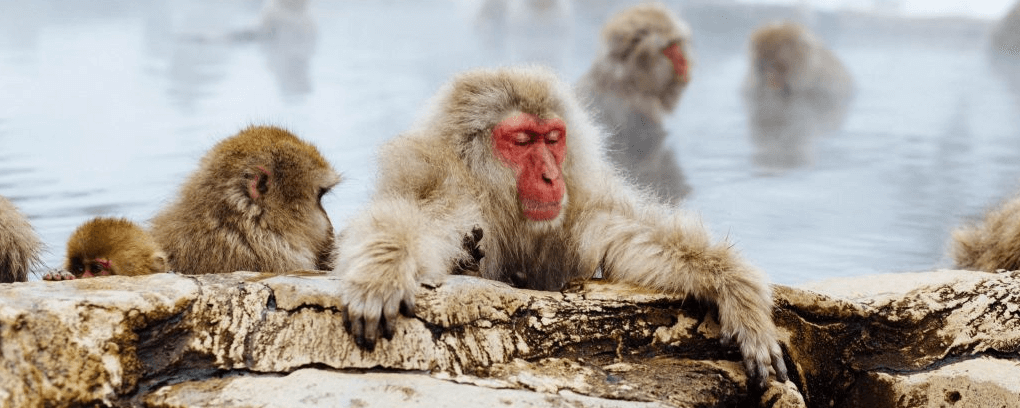
Another no-brainer! Less than an hour drive from Madarao, the Jigokudani Monkey Park is one of Central Japan’s most well-known destinations. At its most popular through the snow of winter, the park is in fact open all year round. The monkeys – known for their hot spring-bathing antics – come to the park all year round with each season offering its own reasons to visit. From Madarao, the monkey park can be reached using the public bus to and from Iiyama Station or alternatively, we can arrange private tours and charters to and from the park. For families and larger groups, this is a great way to visit the park with the convenience of your own transport, driver and (if required) guide. Our guides are locally-based and ready to help you get the most out of your time in Nagano, including a visit to the always entertaining Jigokudani Monkey Park.
1-Day Tour From Myoko & Madarao: Snow Monkeys, Zenkoji Temple & Sake / December to March
(Winter Only) 1-Day Tour From Myoko & Madarao: Snow Monkeys, Zenkoji Temple & Sake
- Spots:
- Pick-up:
- Drop-off:
Experience the best of Nagano on this exclusive winter-only tour, designed to showcase the region’s most iconic sights. With convenient pickups from Myoko Kogen and Madarao Kogen, embark on a journey through snow-covered landscapes to the renowned Jigokudani Snow Monkey Park, where wild monkeys soak in steaming hot springs amid a picturesque winter wonderland. After capturing this rare and unforgettable sight, warm up with a hearty seasonal lunch before exploring the historic Zenkoji Temple, one of Japan’s most important Buddhist sites. Conclude your adventure with a guided sake tasting, offering a taste of Nagano’s rich brewing tradition. Led by an expert English-speaking guide, this immersive winter experience combines nature, culture, and local flavors, making it the perfect addition to your cold-weather getaway or serve as a great rest day from the slopes.
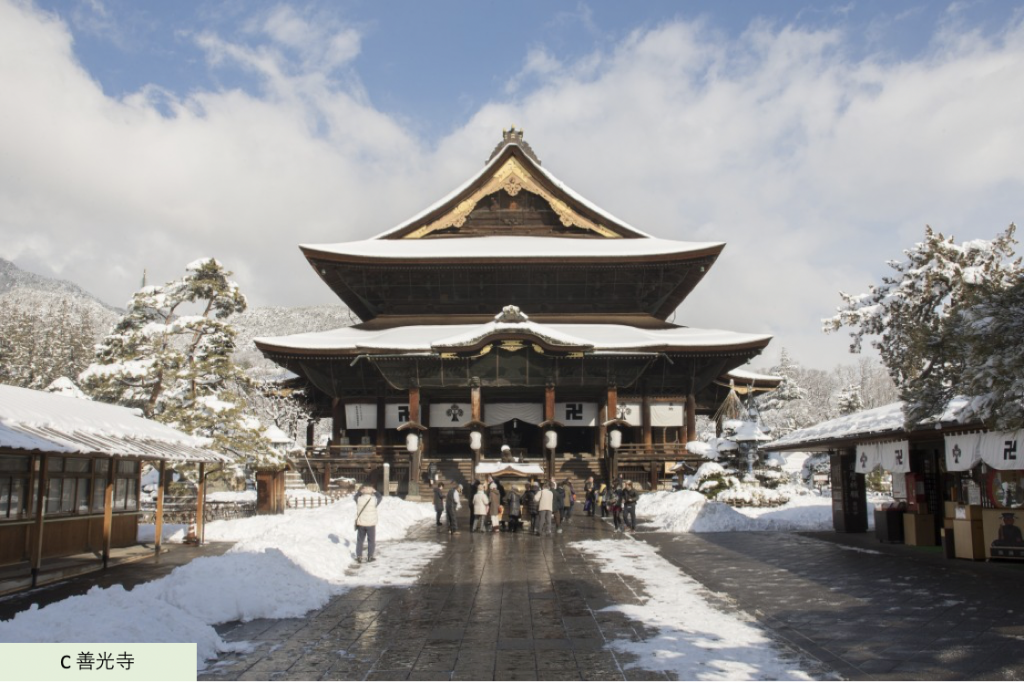
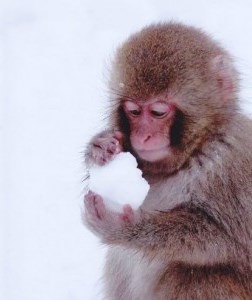
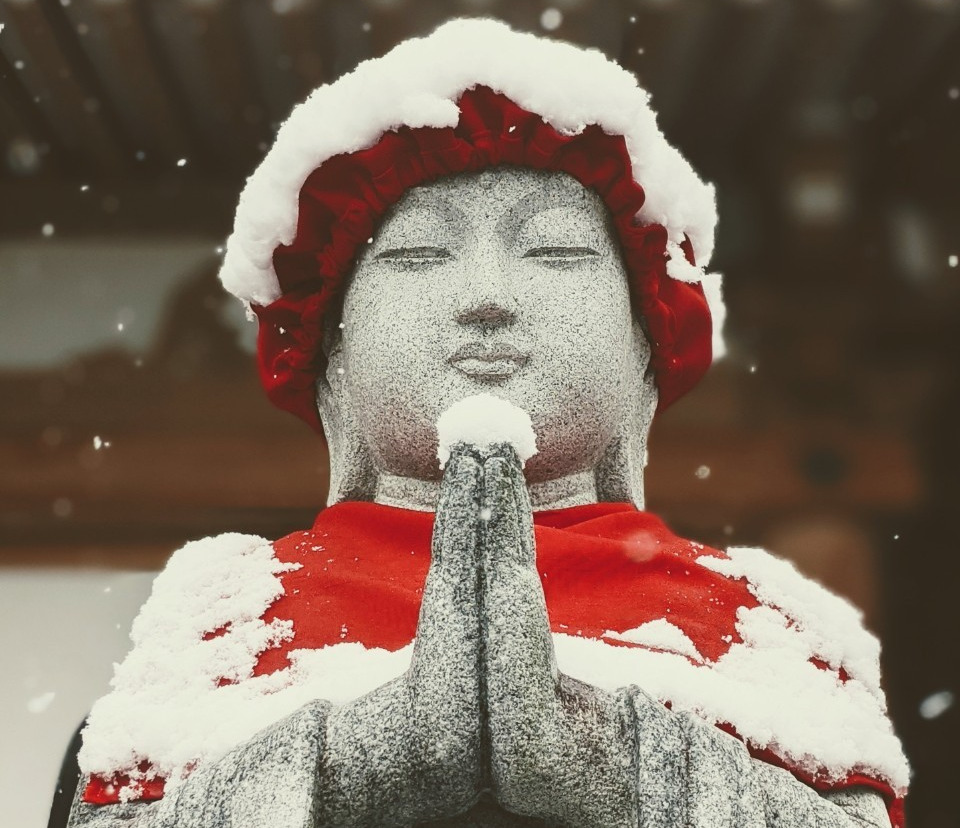
9 / ENJOY NAGANO'S HOT SPRINGS / all year round
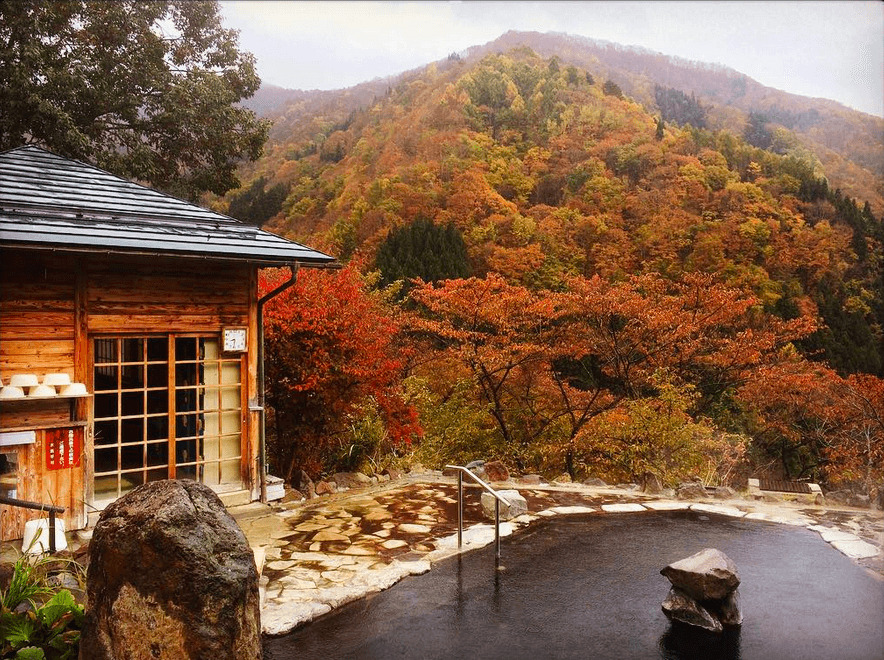
Home to countless natural hot springs, enjoying an ‘onsen’ while in Nagano really is a must-do activity! In the cold months of winter and cooler months of autumn, dipping into a thermal bath feels fantastic whereas in the warmer months of spring and summer, the initial heat of onsen leads your body to cool itself – a truly pleasurable feeling. Spread throughout the region, the historic onsen towns of Nagano – including nearby Nozawa Onsen, Yudanaka Onsen and Shibu Onsen – have numerous ‘ryokan’ (traditional guesthouses) with their own in-house onsen. When visiting Nagano, you really are spoiled for choice. Our ‘Onsen In & Around Nagano’ page introduces everything you need to know about using an onsen, the benefits and where to find them. So take inspiration from the monkeys and get bathing!
10 / WALK THE SHINETSU TRAIL / May to November
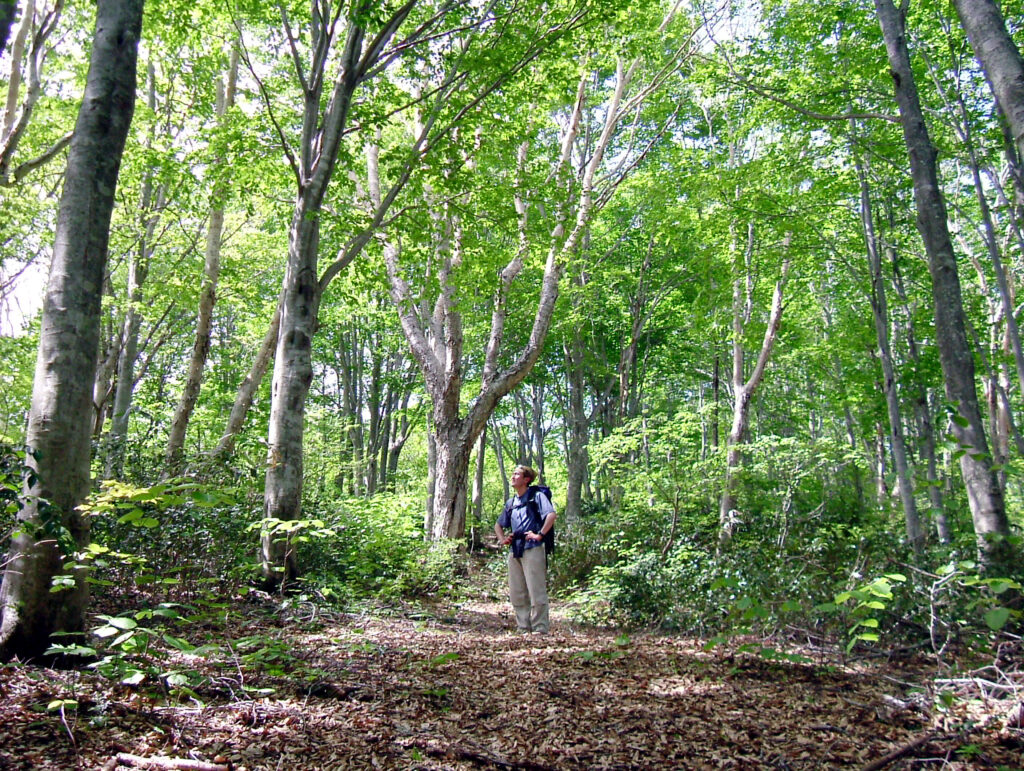
Outside of winter, the Shinetsu Trail runs from approximately 80km along the Sekida Mountain Ridge. Blessed with beauty and historic importance, the trail traces the border of Nagano and Niigata as it moves through beech forests and other diversity ecosystems. Taking 6 days / 5 nights to walk the complete trail, accommodation and camp sites are spread along the trail for avid walkers wanting to make the full journey.
11 / IIYAMA NANOHANA FLOWER FESTIVAL / May
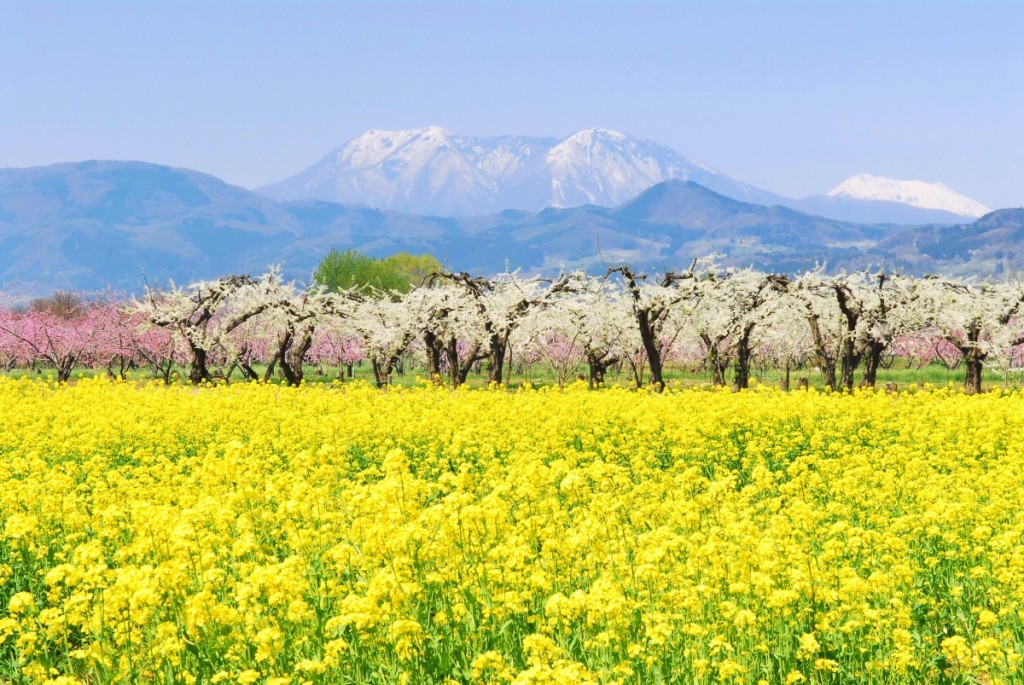
Each May, Iiyama’s bright ‘nanohana’ flowers bloom heralding the brief but beautiful Iiyama Nanohana Flower Festival. Around 13 hectares of fields turn yellow as the flowers transform the valley. Traditional musical performances take place along with walking tours set against the backdrop of the last snow atop the Sekida mountains.
12 / DISCOVER ZENKO-JI TEMPLE / all year round
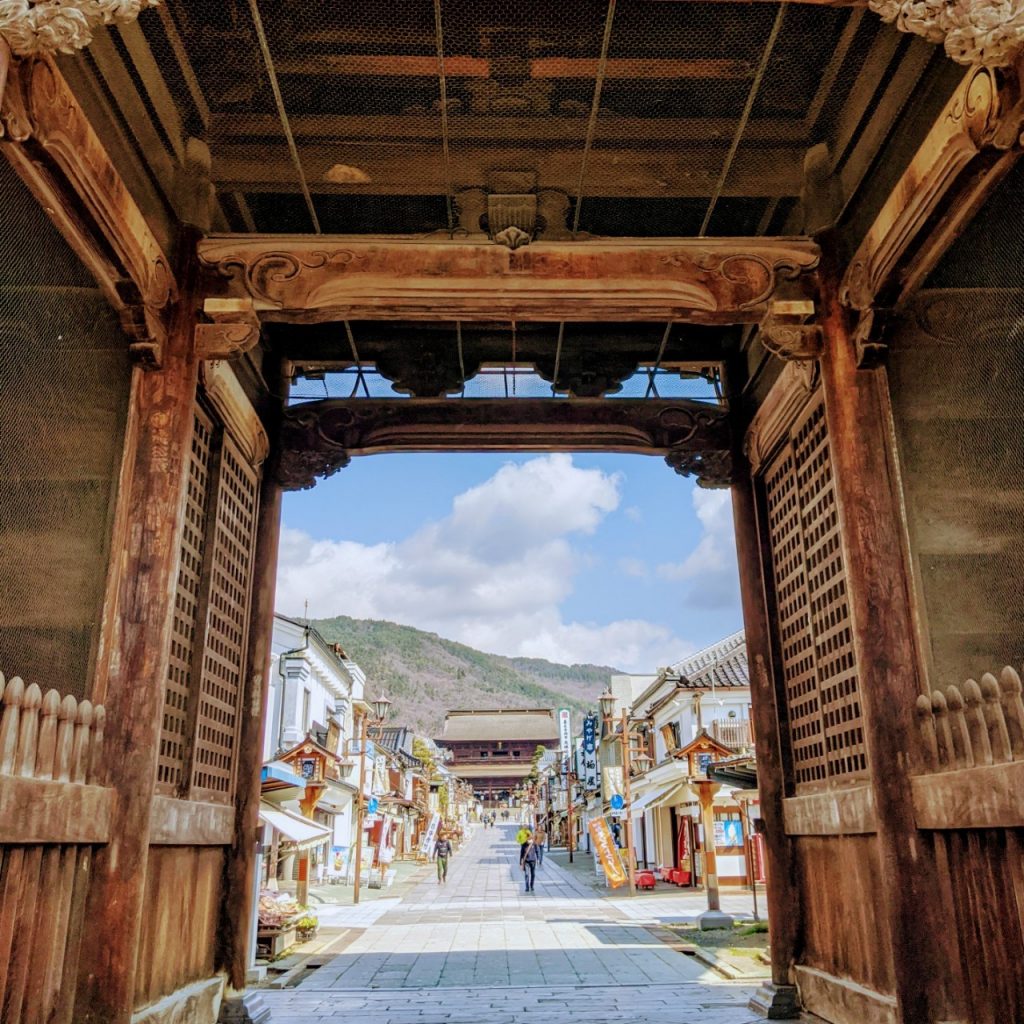
Tea Ceremony and Zenkoji Experience Tour with ‘Shukubo’ Stay
- Spots:
- Pick-up:
- Drop-off:
Located in Nagano City, Zenko-ji Temple is the spiritual heart of Nagano itself. With a near-1400 year history, Zenko-ji’s story is entwined with that of Nagano and to this day, the temple retains its central importance to life in the region. One of the oldest and most important Buddhist temples in Japan, Zenko-ji is also the third largest and home to the first known Buddhist statue ever brought to Japan.
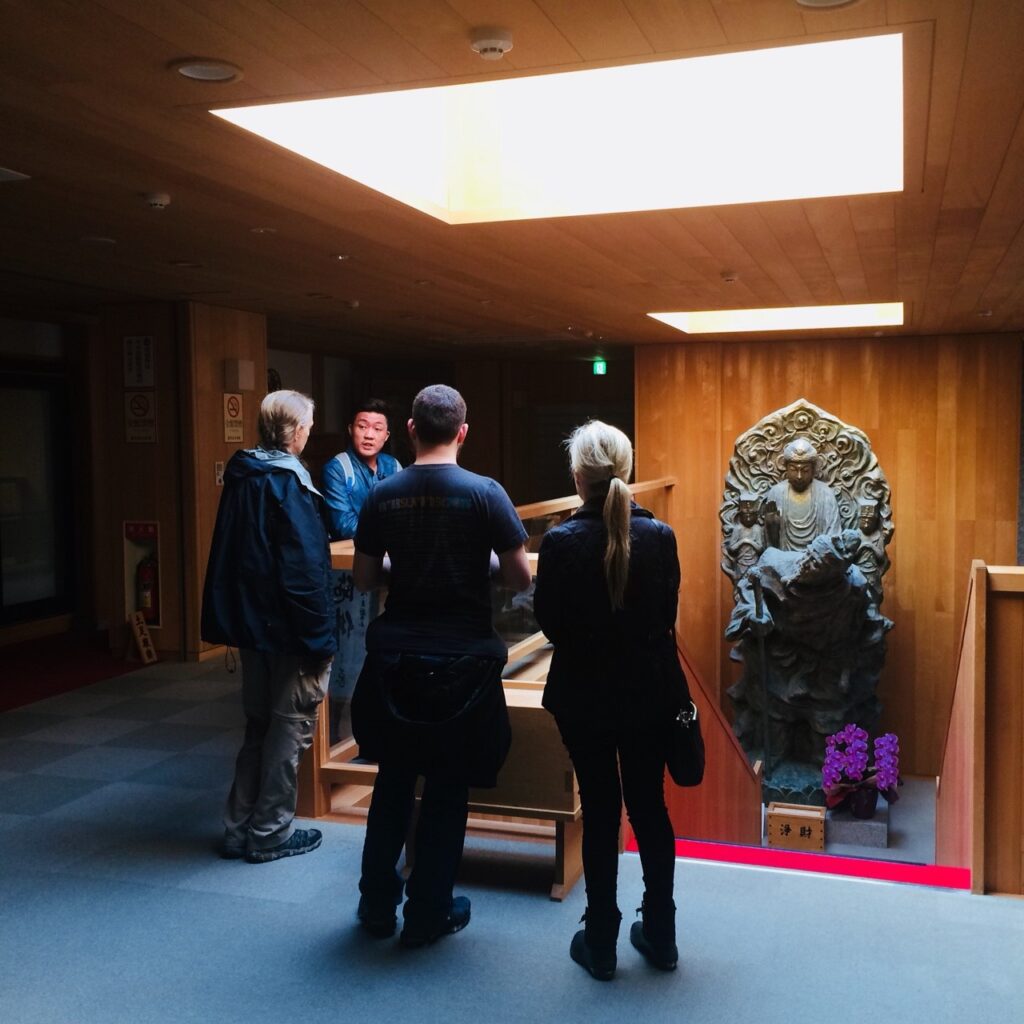
For visitors wanting to experience these activities or simply learn more about the temple, doing so on a private tour is a great way to discover more about the importance of Zenko-ji and role of Buddhism in Japan. We can arrange transport to and from your accommodation in Madarao and combine a visit to the temple with many other nearby destinations and experiences – whatever works best for you!
13 / CULTURAL EXPERIENCES NEARBY ZENKO-JI / all year round
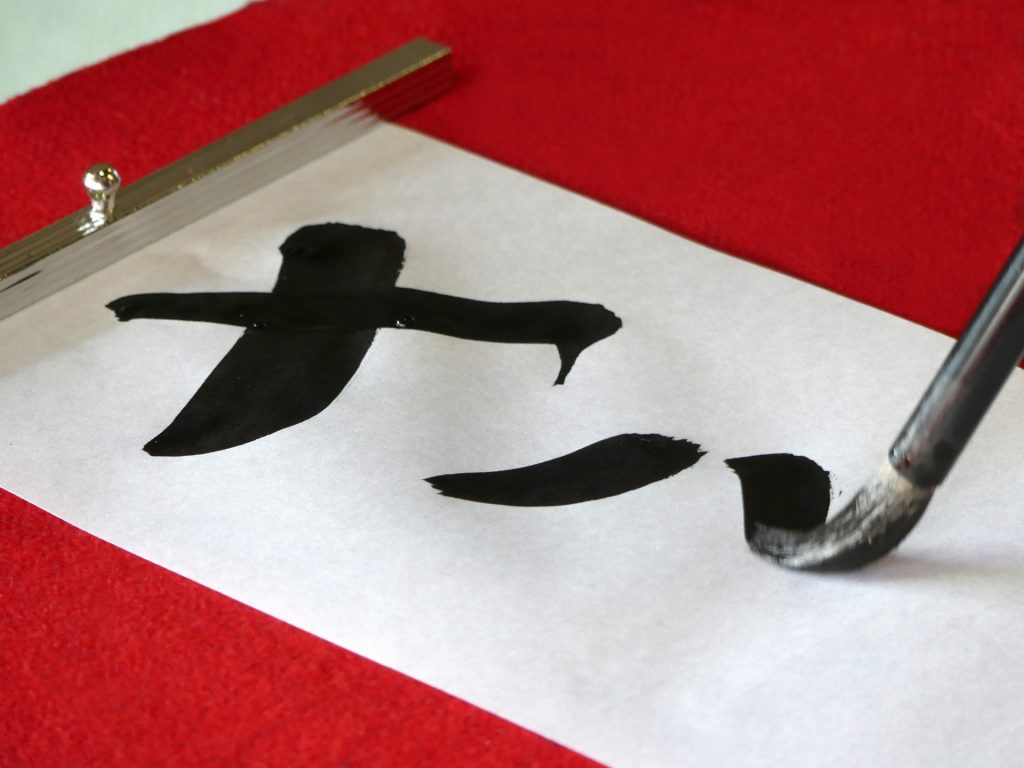
Nearby Zenko-ji Temple, Monzen / Patio Daimon is a small precinct made-up of relocated ‘kura’ (traditional storehouses) and modern buildings designed to blend-in with the traditional. Home to several good restaurants including Monzen Terrace Enya, Patio Daimon also hosts workshops for traditional craft including paper-making, origami, calligraphy and more. Led by an English-speaking instructor, enjoying a craft workshop is an enjoyable activity for visitors of all ages, especially children and families.
14 / ENJOY THE BLOSSOMS OF SPRING / April
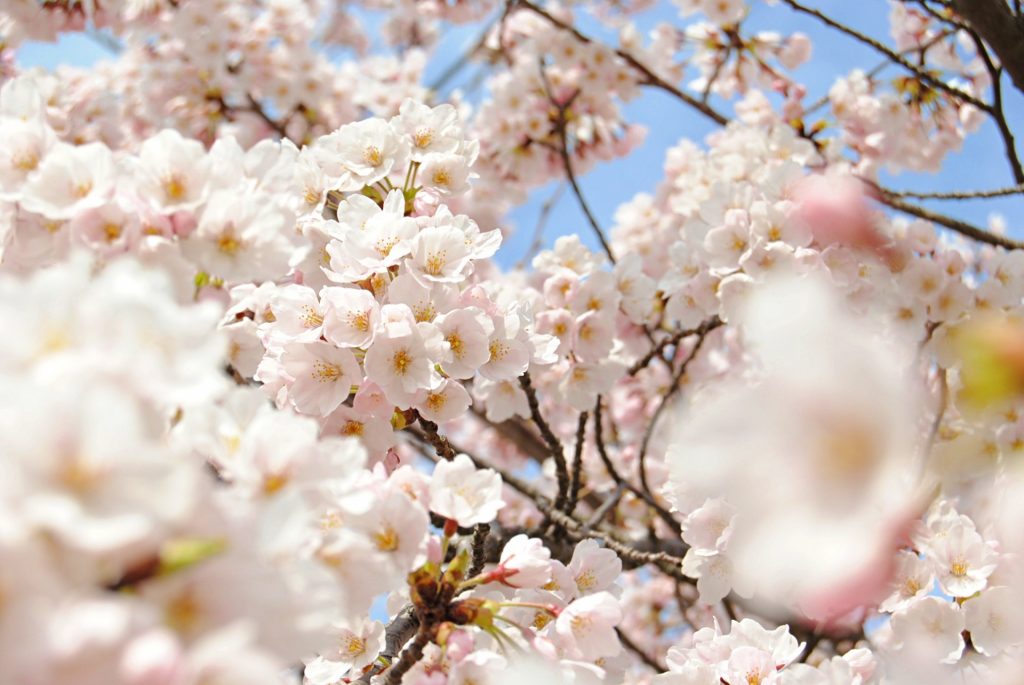
Blooming every April, the cherry blossoms of Nagano transform the atmosphere and character of the region and banish all thoughts of winter. Known as ‘sakura’ in Japan, the blossoms are viewed as symbolic of the fleeting beauty and fragility of life itself and Japanese look forward to ‘hanami’ (flower-viewing) each spring. Given Nagano’s higher altitude and cooler climate, the blossoms bloom later than in Tokyo with many varieties of wild cherry trees spread throughout the mountains. A great option for people staying in Madarao, Iiyama-Jyoshi Park (pictured above and below) is only 15 to 20-minutes walk from Iiyama Station and blessed with some of the regions most impressive sakura.
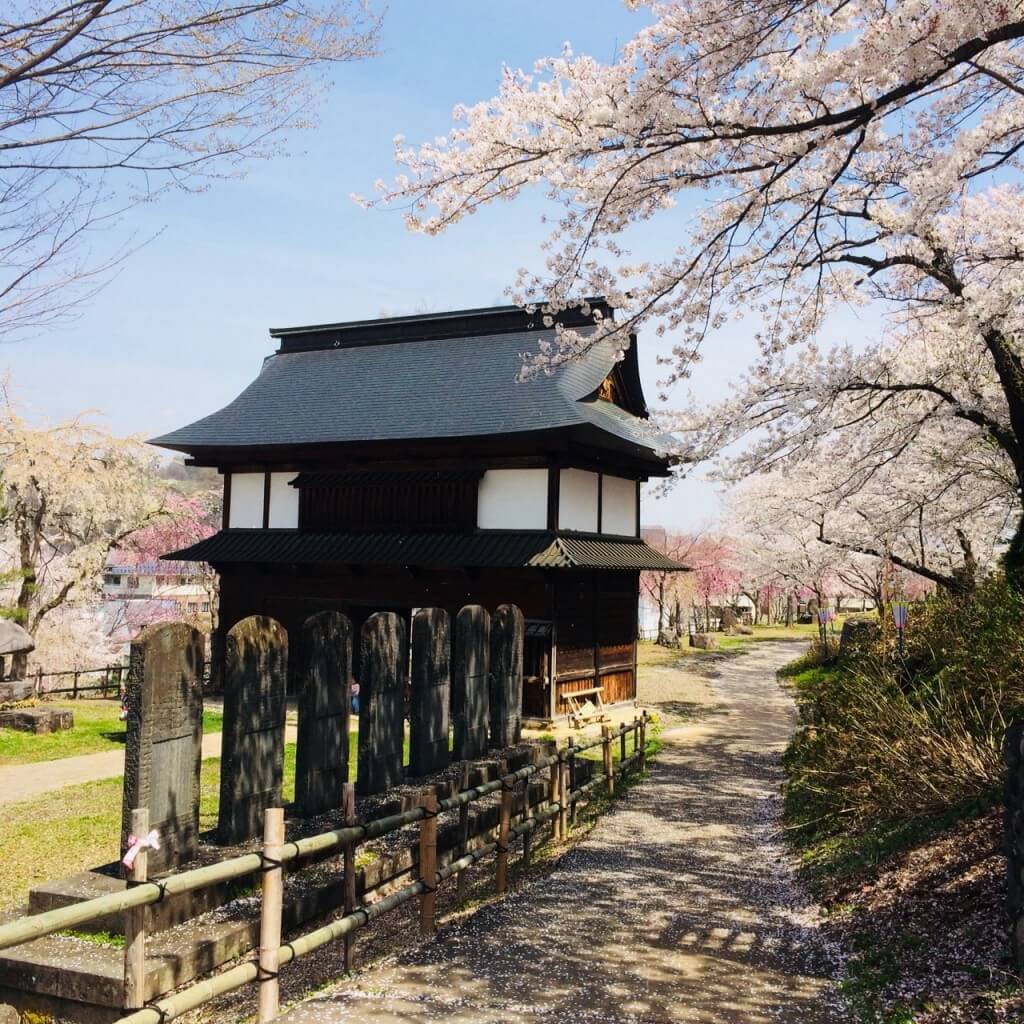
Through April, we also offer our always popular 1-Day Snow Monkeys & Cherry Blossoms in Nagano Tour. Starting and ending at Nagano Station, this tour can be joined from Madarao, and transports guests to the monkeys, lunch and an afternoon of blossom-viewing at some of Nagano’s most beautiful blossom spots.
15 / EXPLORE HISTORIC OBUSE / all year round
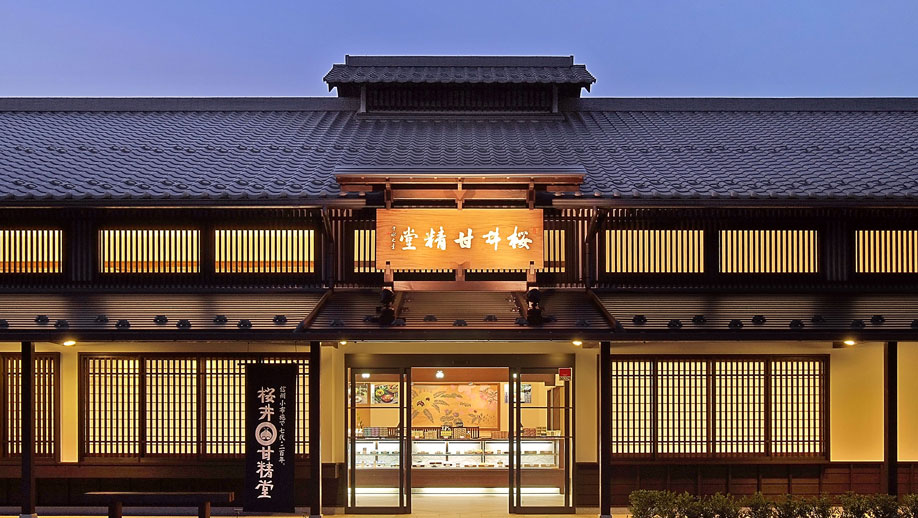
Once an important Edo Period (1603-1868) trading town, Obuse is a small historic town accessible using the Nagano Dentetsu (Nagaden) train line from Nagano Station. Now known for its chestnut confectionaries, sake and miso breweries, Obuse is most famous as home to the Hokusai Museum. Dedicated to the life and work of Japan’s most renowned artists, Katsushika Hokusai, the small museum regularly rotates its large collection in an effort the breadth and significance of his lifetimes work. Having spent some of his final years in Obuse under the patronage of a wealthy local merchant called Takai Kozan, Hokusai’s last great masterpiece adorns the ceiling of Ganshoin Temple, while the Takai Kozan Museum retains Hokusai’s work studio – making Obuse a small but important little town.
16 / DISCOVER TOGAKUSHI / all year round
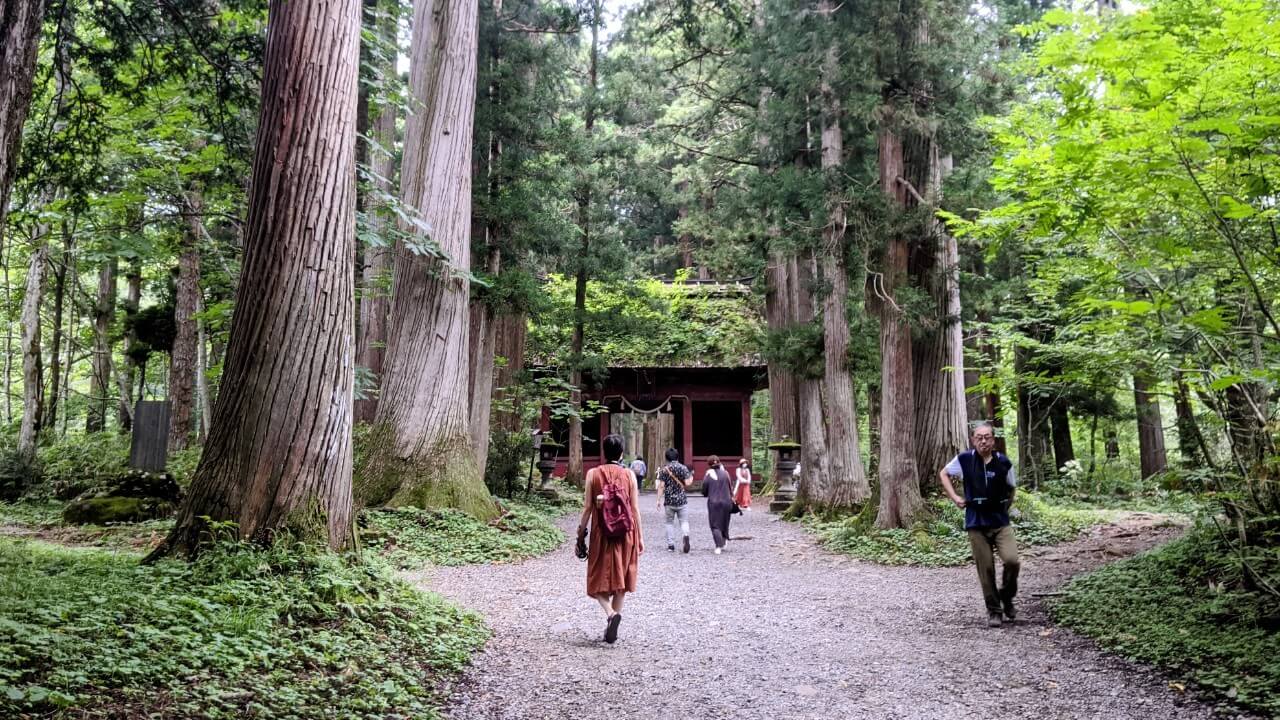
1-Day Togakushi Legends Tour: Hands-on Soba Noodles, Ninja Village, and Hidden Shrines
- Spots:
- Pick-up:
- Drop-off:
Sitting in the forests just outside of Nagano City, Togakushi is home to some of Japan’s most important Shinto shrines, the birthplace of a school of ninja, and producer of some of the best ‘soba’ (buckwheat noodles) in the country. It is also home to Togakushi Ski Resort, a little known but great little resort that can be accessed using a local bus from Nagano Station. All of that makes Togakushi an all year round destination which is now coming to the attention of international visitors. The shrines of Togakushi are spread through the forest, connected by walking tracks of which the avenue leading to the ‘Okusha’ (Upper Shrine) is the most famous. Lined by huge cedars, this is spectacular and otherworldly environment – one that captures the imagination and lives on for many as one of the highlights of Japan Numerous soba restaurants serve Togakushi’s signature noodle dishes while bamboo craft stores sell all manner of the highest quality wares. Home to the Togakure School of Ninja, Togakushi’s Ninjga Museum and Ninja Kids Village make for great entertainment from spring to autumn, before the snow returns and Togakushi Ski Resorts draws mostly local skiers who know just how good the ski runs are. Togakushi is waiting for you to discover it!
17 / ENJOY THE FRUIT OF NAGANO / best: July to November
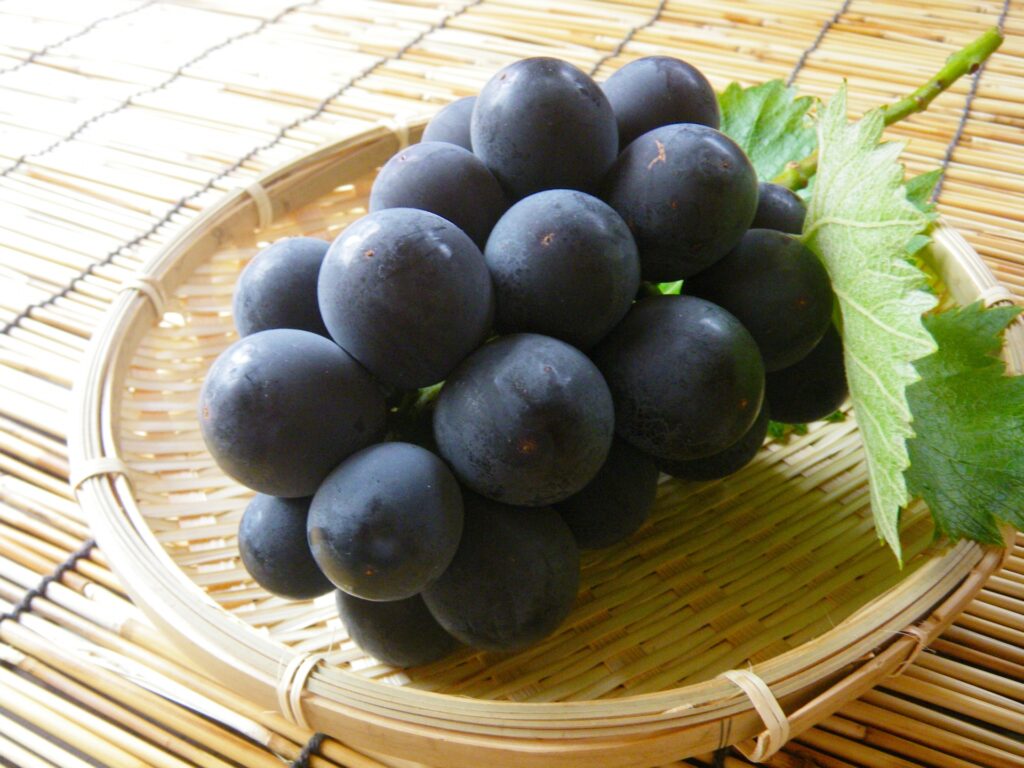
Nagano is a place of mountains and abundant farmlands and in the warmer months, from around July onward, the orchards begin to fill with the years fruit – most famously peaches, grapes and apples. For visitors in the region at that time, enjoying the fruit of Nagano is a true delight, best enjoyed fruit-picking directly from the orchards. Many farms open themselves to the public with apple-picking being a popular activity, and one that can be easily arrange from Madarao, from September to November.
18 / TRY THE FAMOUS FOOD OF NAGANO / all year round
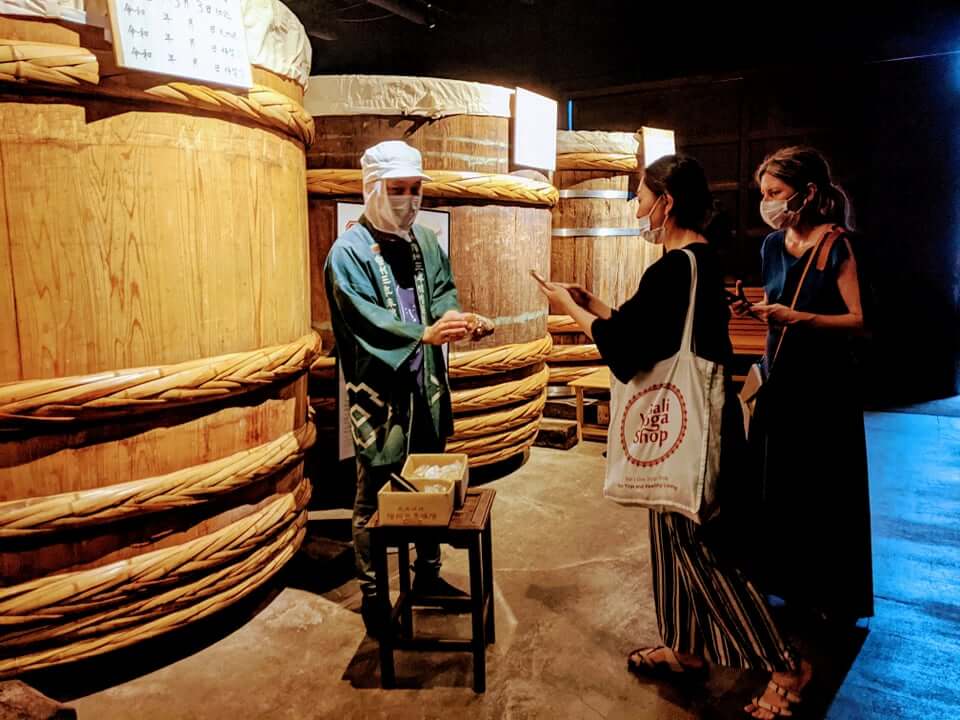
In addition to fruit, Nagano produces an array of delicious food. From apple-fed Shinshu beef to the ‘soba’ noodles of Togakushi, the region produces some of Japan’s best vegetables, fruit and meat. Made from fermented soybean, Nagano’s ‘miso’ is famous throughout Japan along with its ‘tsukemomo’ (pickled vegetables), served as garnish and appetizers with many dishes. ‘Oyaki’ (steamed or baked buns) are another simple but delicious regional treat. Filled with a wide variety of vegetables, including local ‘nozawana’ or tasty mushrooms, you’ll find oyaki everywhere in Nagano and definitely should try it while here. These are just some of the many, many delicious things available in Nagano all year round.
19 / ENJOY THE AUTUMN LEAVES / October to November
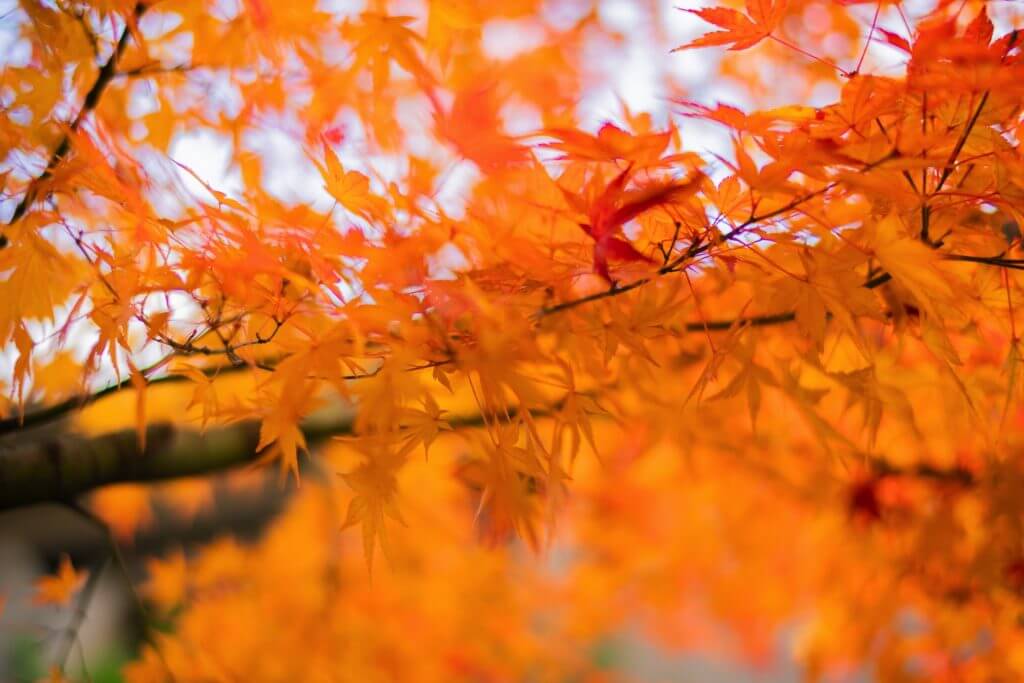
Though not as famous as the blossom of spring, the autumn leaves of Nagano are an equally beautiful sight. Occurring from around mid-October onward each year, Madarao will shift in colour as the landscape transforms all shades of yellow, amber, and red. Other nearby locations including Togakushi and Shiga Kogen are also known for the beauty of their leaves, while Kamikochi and the Tateyama-Kurobe Alpine Route (as discussed below) – spectacular any time of year – are at their most beautiful. Our ‘Autumn Leaves in Nagano’ page is a great place to start when hunting for the best viewing spots in Nagano.
Getting a little further afield…
20 / EXPERIENCE THE TATEYAMA-KUROBE ALPINE ROUTE / April to November
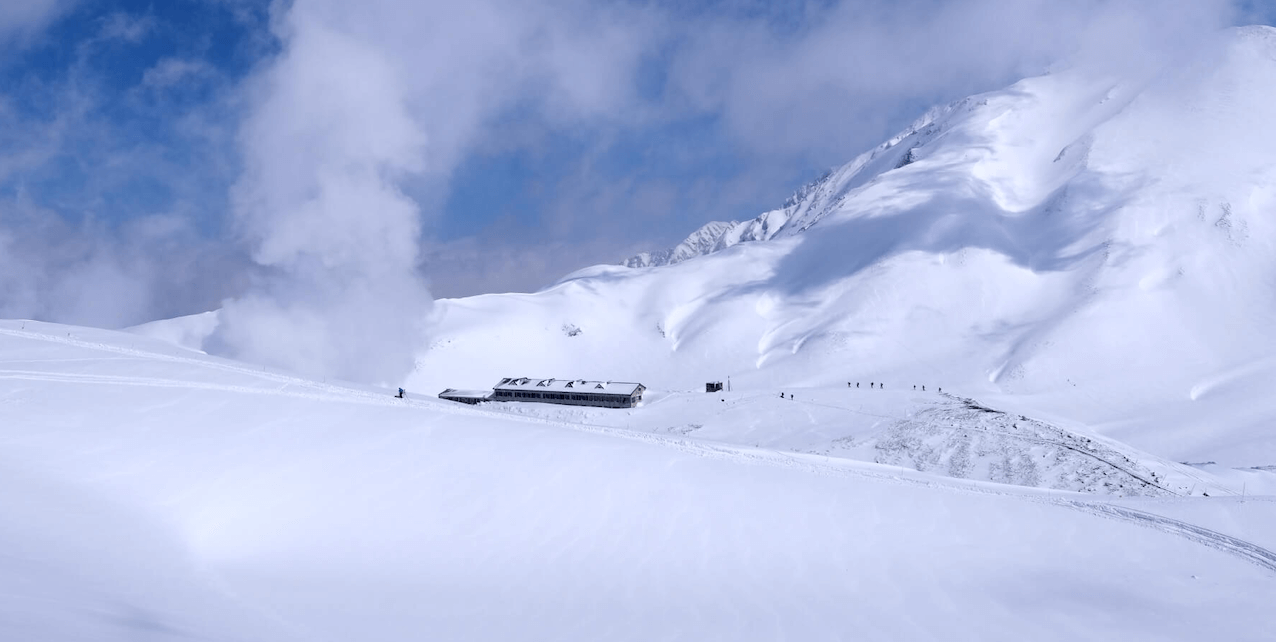
Popular
[Spring Only] 1-Day Tour from Nagano: Snow Walls of Tateyama-Kurobe Alpine Route
- Spots:
- Pick-up:
- Drop-off:
Often referred to as the ‘Roof of Japan’, the Tateyama-Kurobe Alpine Route is one of Japan’s most iconic landscapes. Open each year from mid-April to mid-November, Tateyama-Kurobe can be access on the Nagano-side of the mountain range via Ogizawa Station. At its most popular from opening in April until June, Japanese and international visitors flock to the Tateyama to see the fabled ‘Snow Walls’ – a truly stunning and unique sight. Through summer, once the snow has gone, the Tateyama-Kurobe Alpine Route offers some of Japan’s best hiking while the autumn transitions to a stunning array of colours. We highly recommend making the journey to the Roof of Japan.
21 / MATSUMOTO CASTLE / all year round
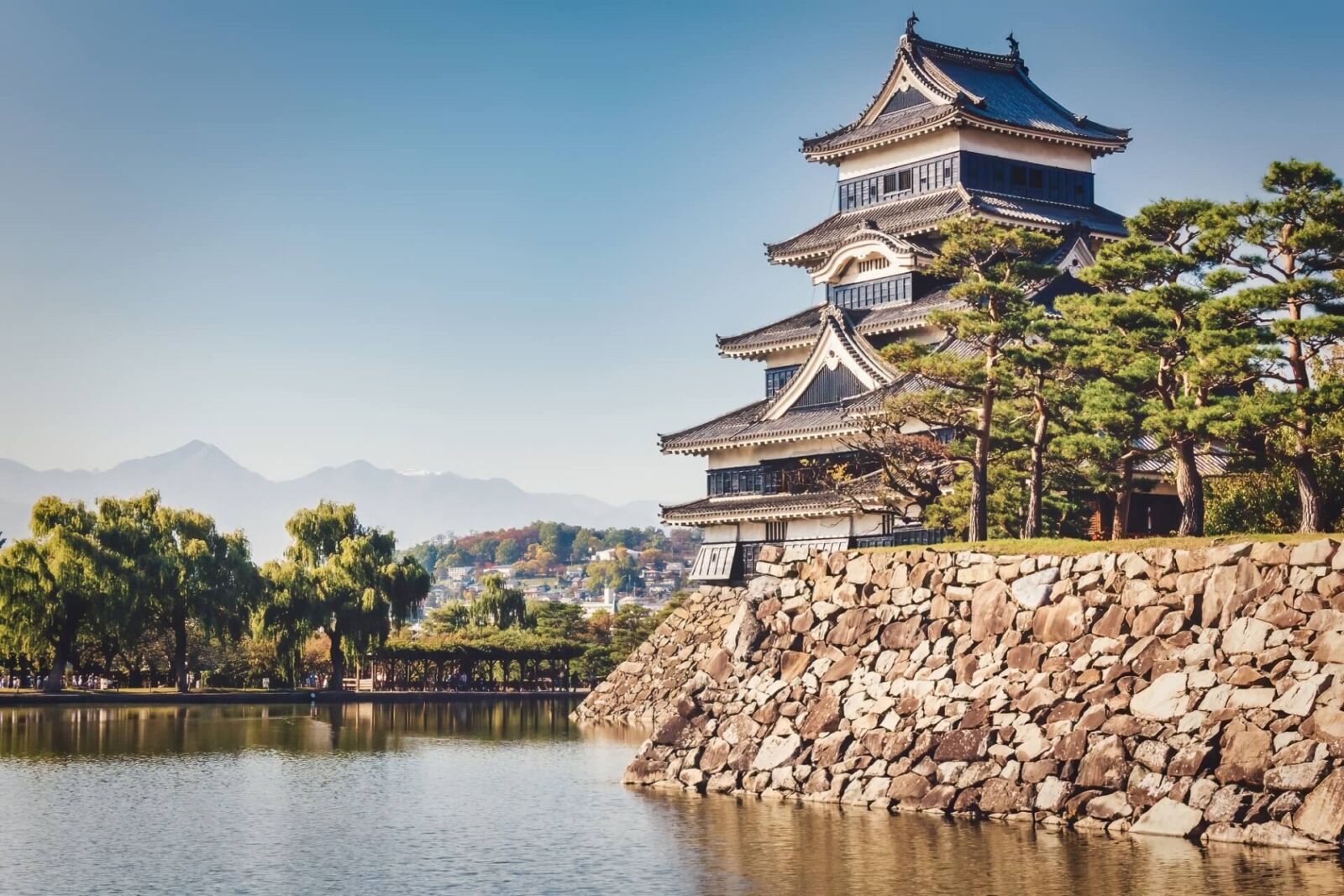
Best Selling
1-Day Tour from Nagano and Matsumoto: Kamikochi & Matsumoto Castle
- Spots:
- Pick-up:
- Drop-off:
Standing guard over Matsumoto City for more than 400 years, Matsumoto Castle is a registered National Treasure and for Japanese, an instantly recognizable structure. Visiting the castle is an easy and enjoyable daytrip from Madarao via Nagano Station. While there, enjoy the historic character of the city along with its many good cafes, restaurants, museums and shopping. For visitors moving on from Madarao, Matsumoto is a great launching point from which to head west or south and enjoy the following destinations.
22 / DISCOVER KAMIKOCHI / April to November
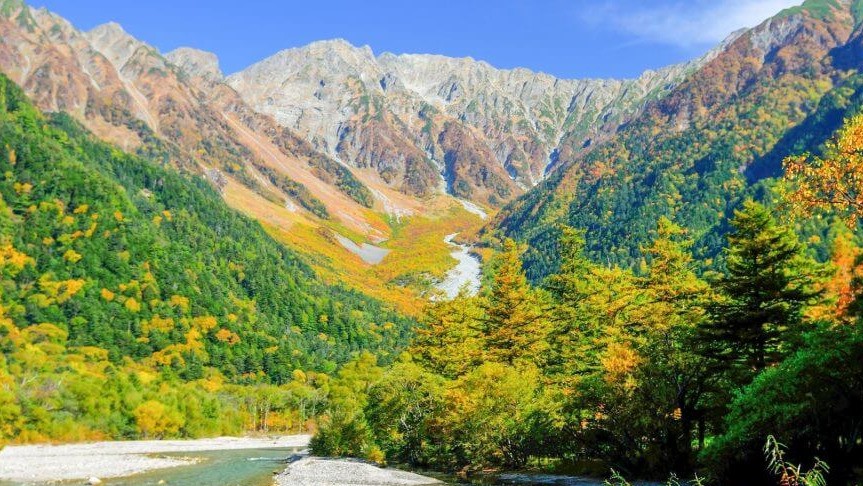
1-Day Tour from Takayama: Cultural Heritage and Kamikochi's Alpine Beauty
- Spots:
- Pick-up:
- Drop-off:
Situated in the Chubu Sangaku National Park, Kamikochi is a pristine and beautiful alpine valley open to the public from mid-April until mid-November each year. The valley follows the Azusa River while some of Japan’s tallest mountain peaks rise to over 3000 meters above. From the Kamikochi Bus Terminal, walking trails span-out along the valley – suitable to anyone of reasonable fitness – before more advanced hiking and mountaineering trails lead into the mountains. Considered the jewel of the Chubu Sangaku National Park, visiting Kamikochi is one of Nagano’s most memorable experiences – a truly special place of natural and spiritual importance.
23 / WALK THE HISTORIC NAKASENDO / best: May to November
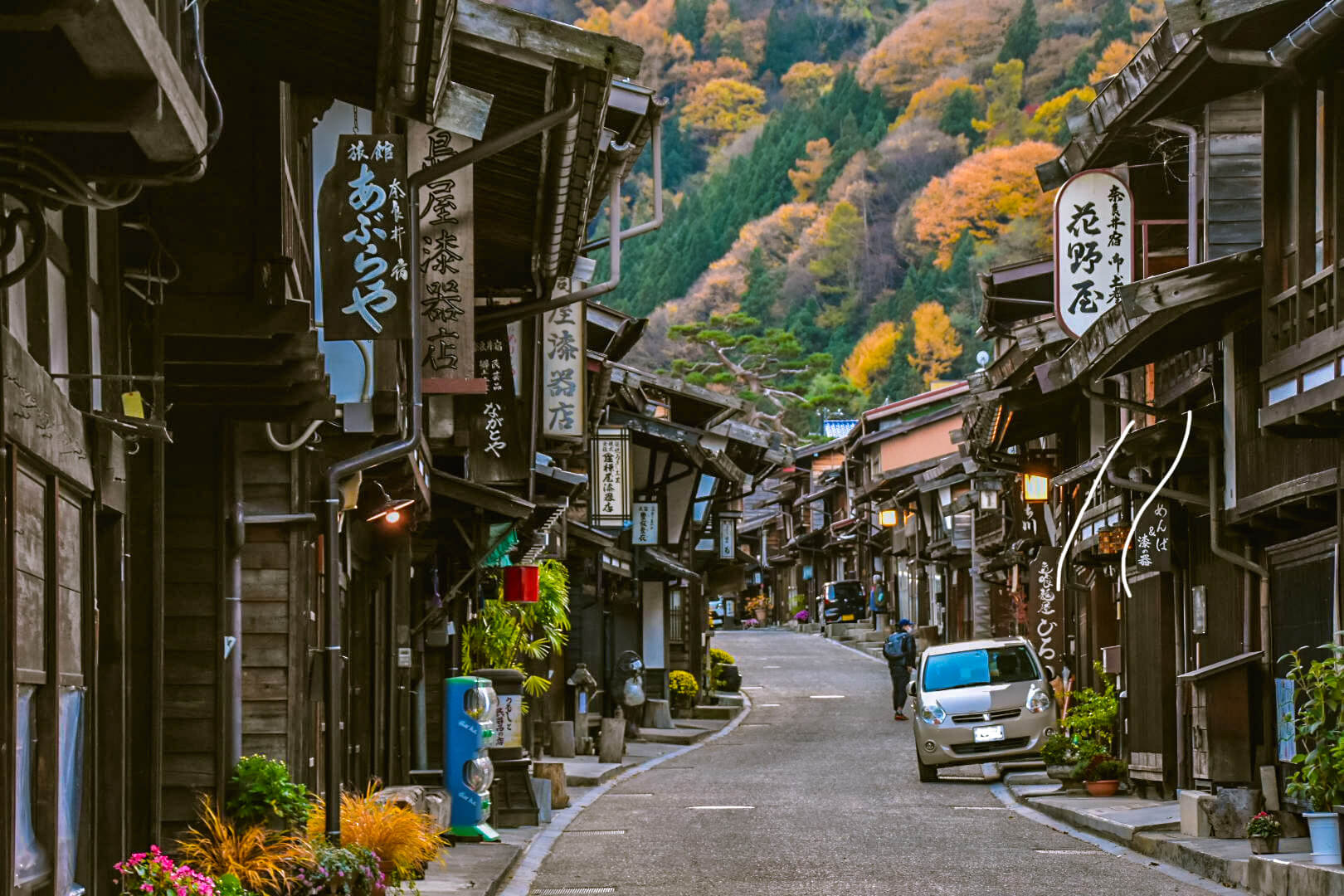
Popular
1-Day Tour from Nagano and Matsumoto: Step into the Past on the Nakasendo
- Spots:
- Pick-up:
- Drop-off:
Lying to the south of Matsumoto, the Nakasendo Trail traces a historic highway that once connected Tokyo – then called Edo – and Kyoto during the Edo Period (1603-1868). Though much of the route is now gone, several sections can still be walked including the picturesque ‘Kisoji’, the section of road that runs through the Kiso Valley. Serviced by many ‘juku’ or post towns, the Kisoji is known for the historic preservation of Narai-juku, Magome-juku and Tsumago-juku. These picturesque little towns are cared for by local residents who strive to maintain their traditional aesthetic and ways of life. The journey on-foot between the towns is a lovely experience – particularly in spring and autumn – and one that can be combined on your way to or from Madarao.
24 / TAKAYAMA & ONTO SHIRAKAWA-GO / best: May to November
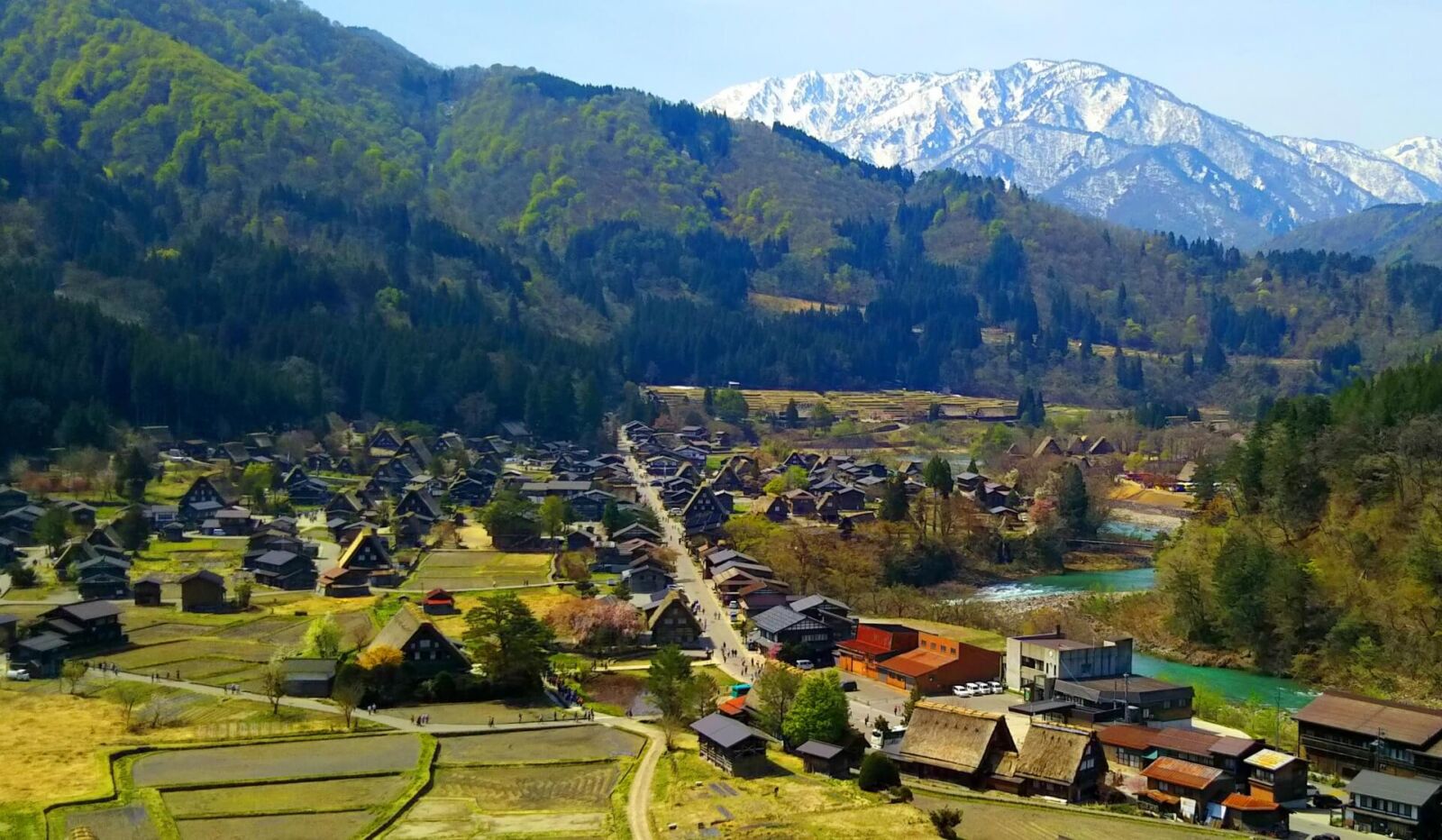
Best Selling
1 Day Tour from Kanazawa: Shirakawa-go, Gokayama and Wood Carving Village
- Spots:
- Pick-up:
- Drop-off:
We’re now getting quite far from Madarao but still in the region, the historic old town of Takayama and the World Hertiage-listed villages of Shirakawa-go and Gokayama are some of the most popular destinations in Central Japan. Open all year round, they are perhaps best experienced in the warmer months of spring, summer and autumn. Takayama is known for the excellent preservation of its historic town centre while the villages of Shirakawa-go and Gokayama were inscribed on the World Heritage list in 1995, bringing them global attention and recognition of their cultural importance, not just to Japan, but the world. Visiting these living cultural treasures of Japan is well-worth the effort.
25 / JOIN THE FESTIVALS OF NAGANO / all year round
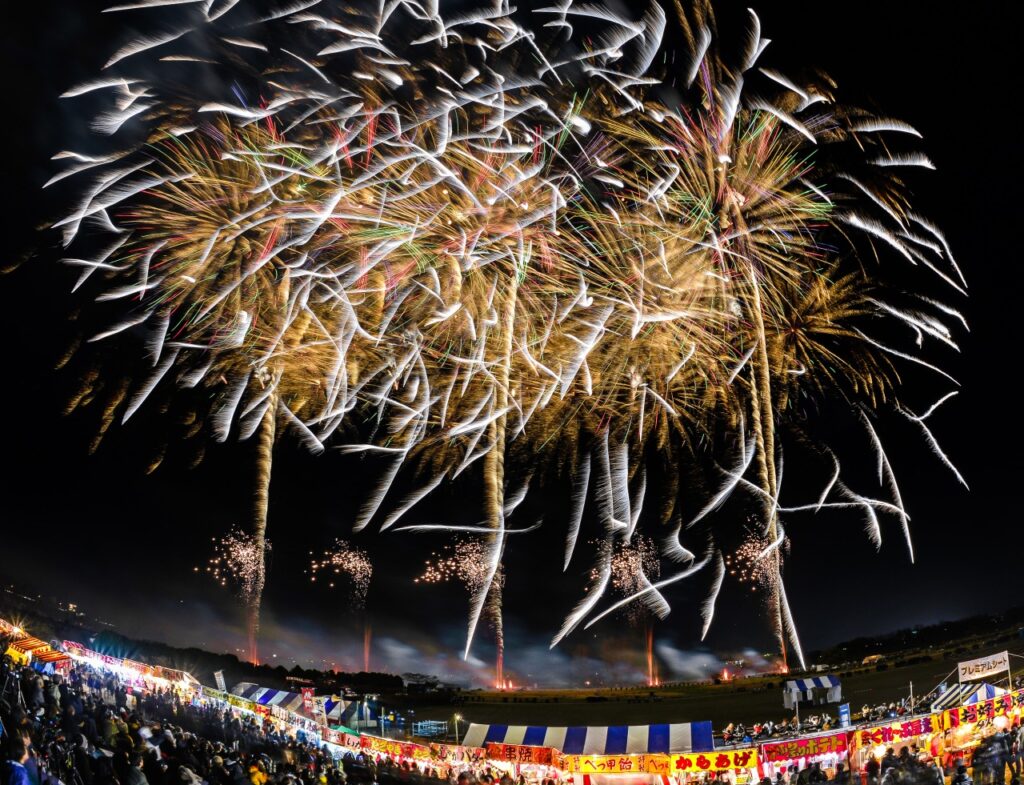
As the vibrant heart at the centre of the prefecture, Nagano City is home to some of the region's most exciting festivals and events. Chief among these is the Zenkoji Ometsando Illumination. Sharing a name with a popular shopping district in Tokyo, Omotesando (Pilgrim's Path in Japanese) is a straight road leading from Nagano Station to the city's most famous Temple, Zenkoji.
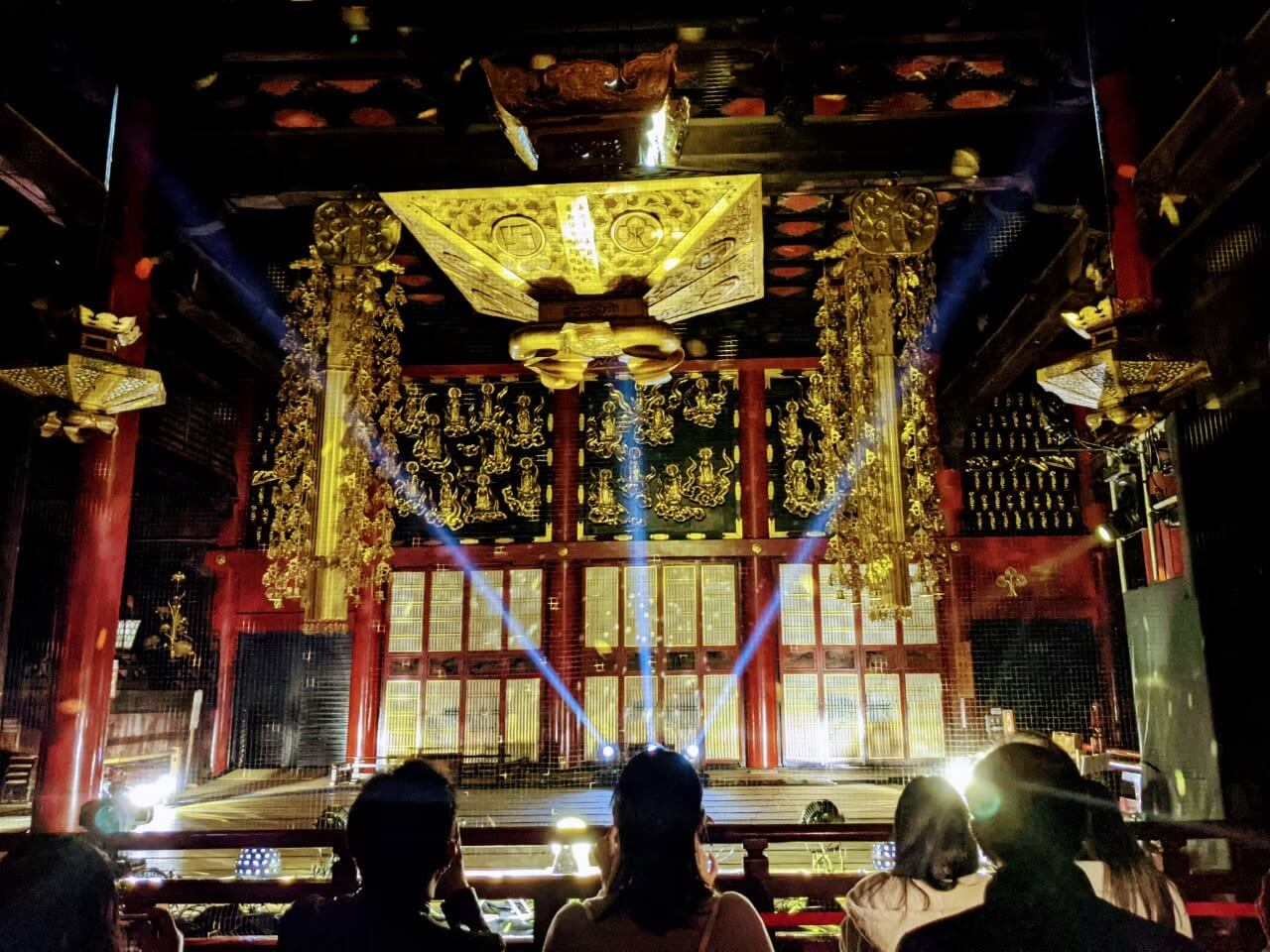
In November of each year, this path is illuminated on both sides. This is just the appetizer though, for the main course that comes in mid-December, when the temple itself is illuminated. Another, more recent addition to the Nagano City festive calendar is the Tomyo Fesitval. For this festival, the streets leading up to Zenkoji Temple are adorned with intricately designed paper lanterns. Among those contributing designs are school children, artists and other prominent local figures.
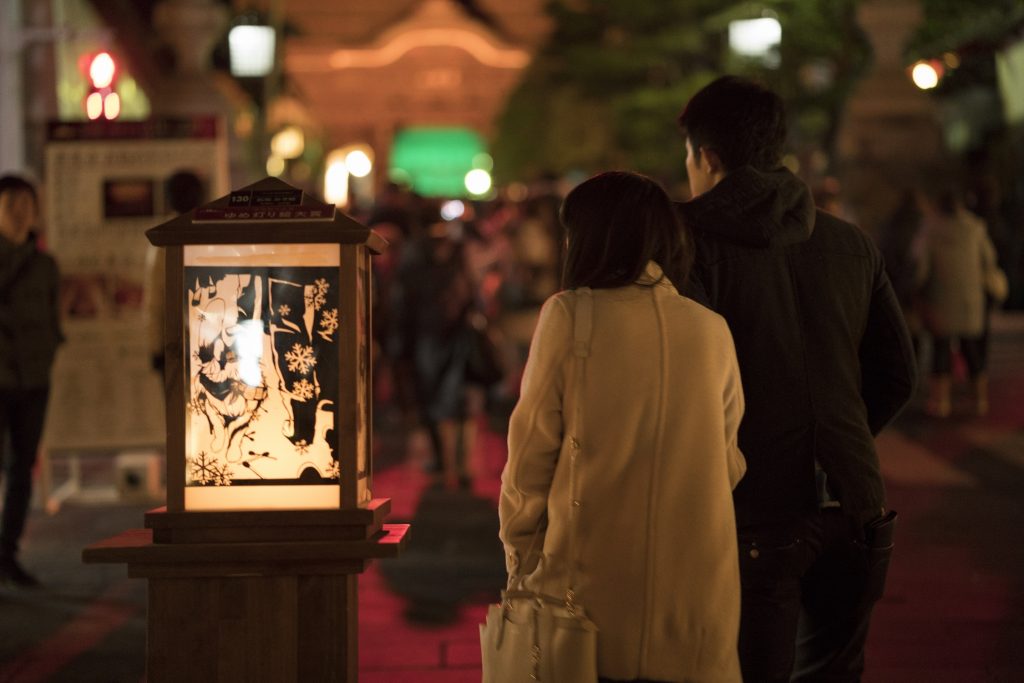
1-Day Tour: Snow Monkeys & Zenkoji Tomyo Lantern Festival
- Spots:
- Pick-up:
- Drop-off:
The event starts on the second weekend of February and lasts for one week. Finally, we come to one of the highlights of the year in Nagano, the Ebisu-ko Fireworks Festival. Taking place on November 23rd each year, over the course of the 2 hour event, around 15,000 individual fireworks are detonated, creating a display to rival the world's best.
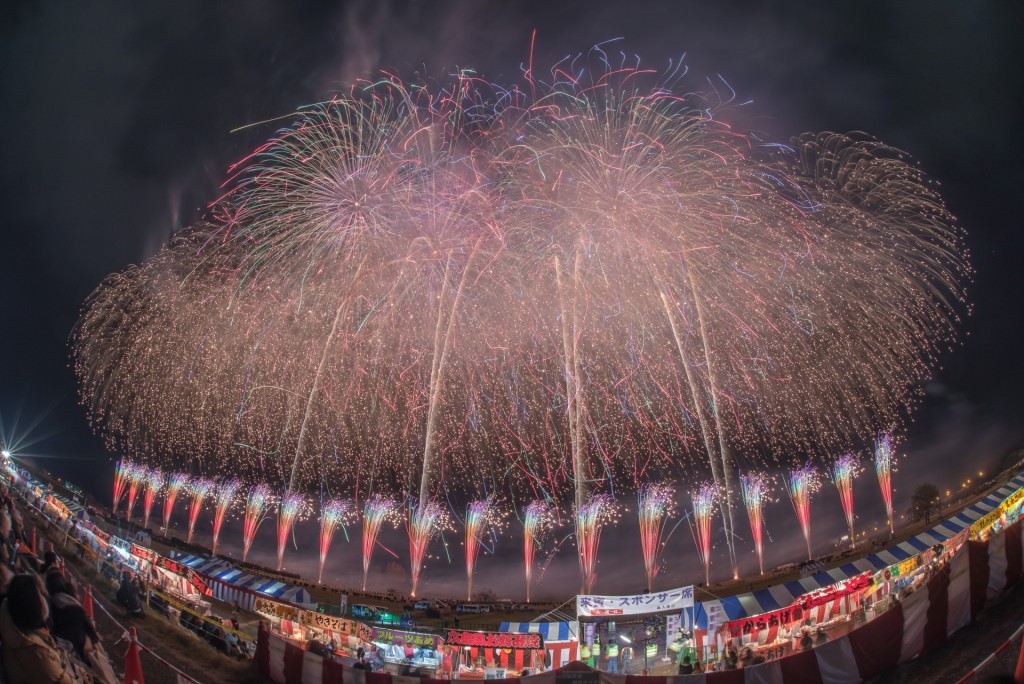
[NOV 23 ONLY] 1-Day Tour: Ebisu-ko Fireworks Festival & Snow Monkeys
- Spots:
- Pick-up:
- Drop-off:
Given the time of year, don't forget to wrap up warm, and perhaps bring some of your own food and drinks with you. Food and drink will be offered on site, but it may be expensive and you could be facing very long queues, with tens of thousands of people attending the event along the Sai River.
WHERE TO STAY WHEN VISITING MADARAO
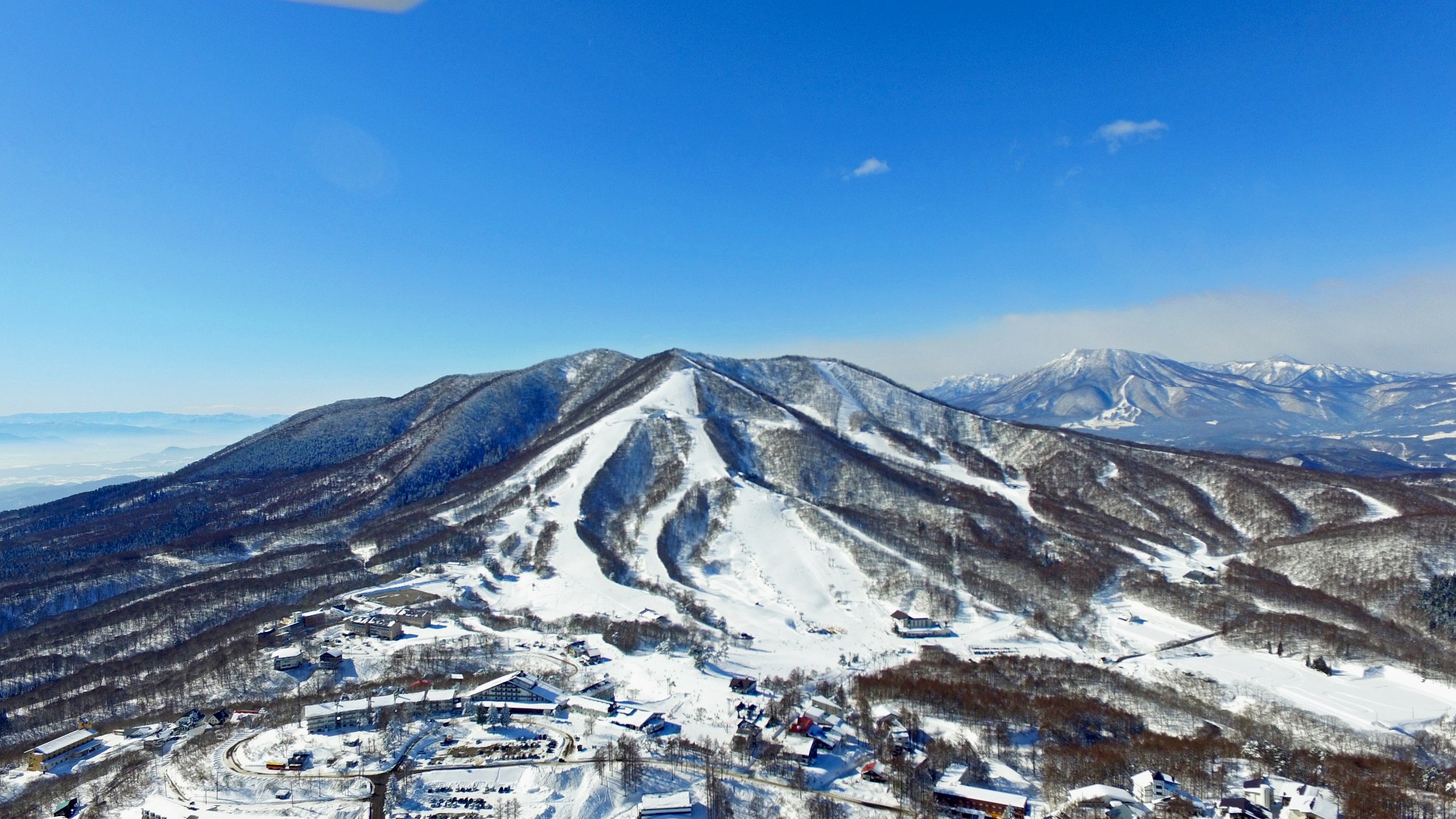
Madarao is a small resort with accommodation spread-out around the base of the ski runs. The main concentration of hotels and guesthouses is found in the central village in the area around Madaro Kogen Hotel. This is the largest hotel at the resort with most accommodation being small, often family-run lodges and guesthouses. The size and quality of those lodges and guesthouses varies with many previously Japanese-owned businesses being bought-up by foreign owners in recent years. Some of these are owned from overseas and operated by seasonal staff, which can affect the quality of your stay so it’s a good idea to check the reviews and look for a lodge or guesthouse operated by an owner living on-site. Whether they are foreign or Japanese shouldn’t make a difference. As long as they are there, you can expect to be well looked after. For accommodation listings, see our 'Madarao & Iiyama Area' hotel page or head to our 'Best Places to Stay in Madarao' page for suggestions of other nearby areas you can stay in such as the always popular Nozawa Onsen and resorts of Myoko Kogen.
MADARAO MOUNTAIN RESORT: THE STATS & FACTS

Madarao is a small resort but one that wins lots of devotees. Blessed with lots of powder and a natural bowl topography, Madarao makes use of both with some fantastic tree runs and fun terrain. Visitors can enjoy the resort by itself or choose to buy an all-mountain pass that also covers the adjoining Tangram Ski Circus. So though small, Madarao Mountain Resort is a lot of fun and when the snow is good, it’s hard to beat. For all the stats, facts and highlights, see our ‘Madarao Mountain Resort’ main page.
JAPAN SKI RESORTS: EVERYTHING YOU NEED TO KNOW
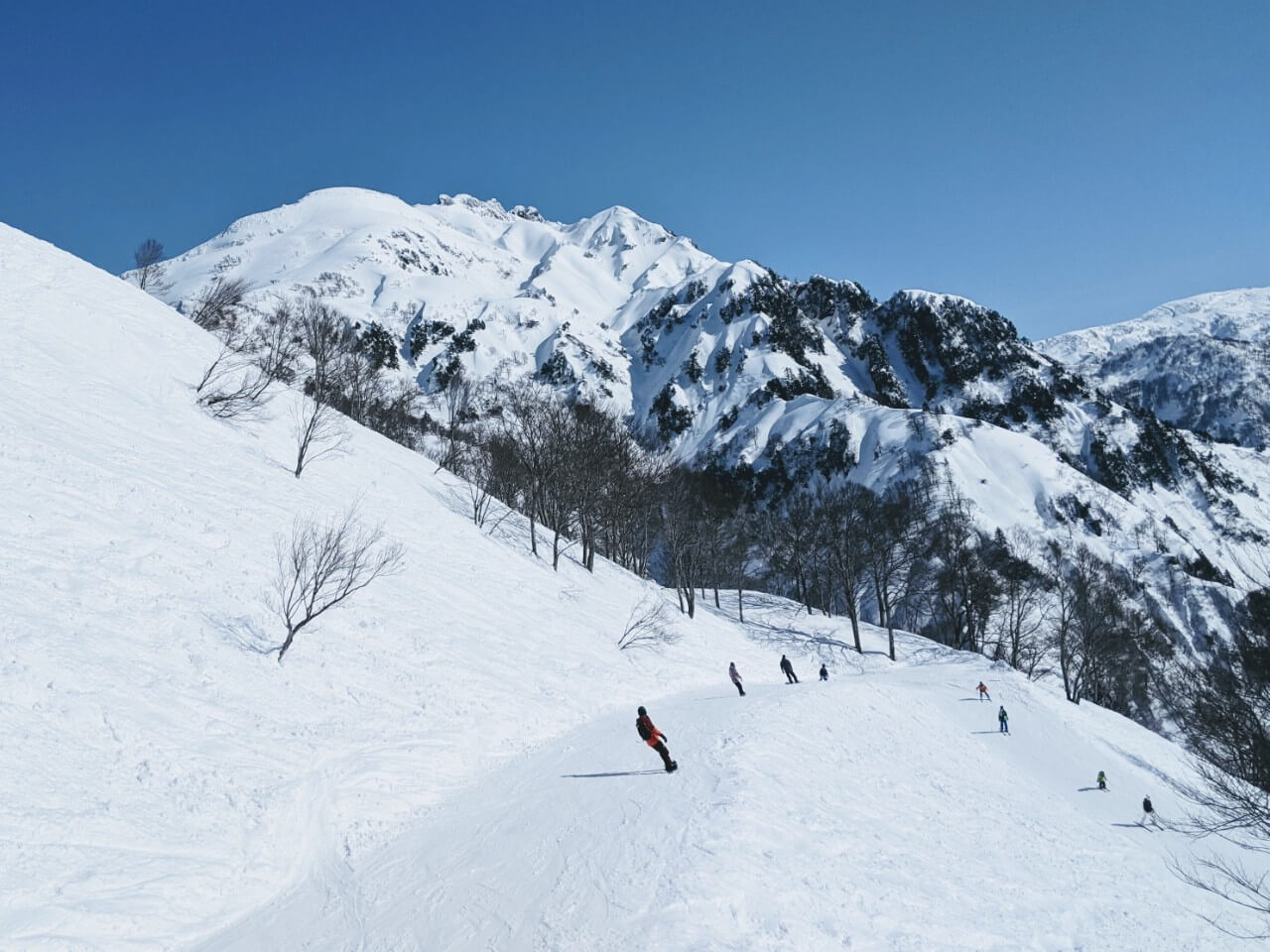

Did you know that Madarao is just one of the more than eighty ski resorts in Nagano and more than five hundred in Japan? Needless to say, when you choose Nagano for your winter getaway you are spoiled for choice! Our ‘Japan Ski Resorts’ page has everything you need to know to start planning your ski and snowboard adventure including: LATEST NEWS & DEALS, THE BEST RESORTS IN NAGANO & JAPAN, FAQs and of course SKI PACKAGES, ACCOMMODATION, TRANSPORT & TOURS.
HOW TO GET TO MADARAO
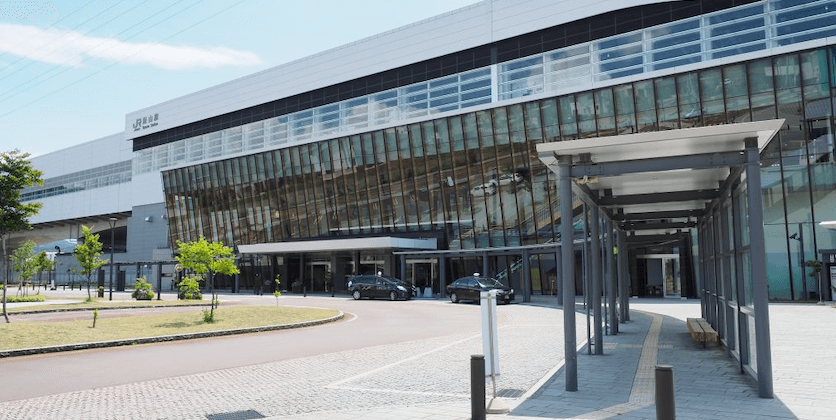
For international visitors, Madarao is most easily reached via Iiyama Station using the Hokuriku Shinkansen line. Shuttle buses operate to and from the station, making the journey to Madarao in 20 to 25-minutes, placing it within easy reach of Nagano City, Tokyo and beyond. For detailed information, see our 'How To Get To Madarao - Nagano Ski Resorts Info' page.
TOURS AND CHARTERS FROM MADARAO
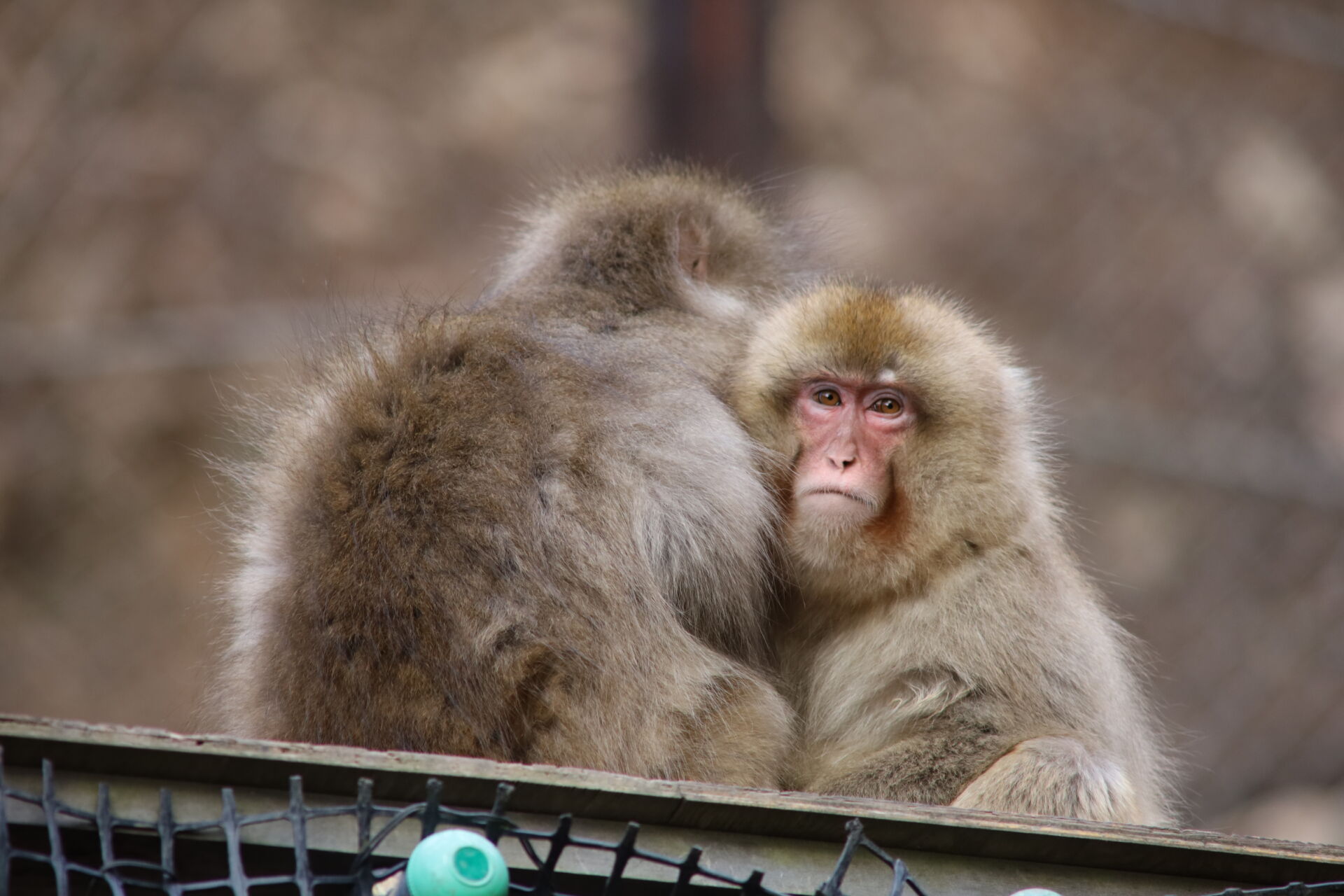
If you are staying in Madarao for a ski trip, you may end up with a few off days to spend in the area. While Madarao itself doesn't have much to offer beyond skiing, there a plethora of amazing options for a day out in its immediate surroundings.
[START FROM NOZAWA/MADARAO] Private Snow Monkey Tour
- Spots:
- Pick-up:
- Drop-off:
With pick up directly from your accommodation in Madarao, or a location of your choice, this private tour is ideal for larger groups, travelers looking for a more tailored experience, or anyone who wants to see the Snow Monkeys of Jigokudani! With a visit to the Monkeys followed by an exquisite Japanese lunch and a stop by the charming town of Obuse and the historic Zenko-ji temple, this tour will show you the highlights of the area and give you a break from skiing for a day.
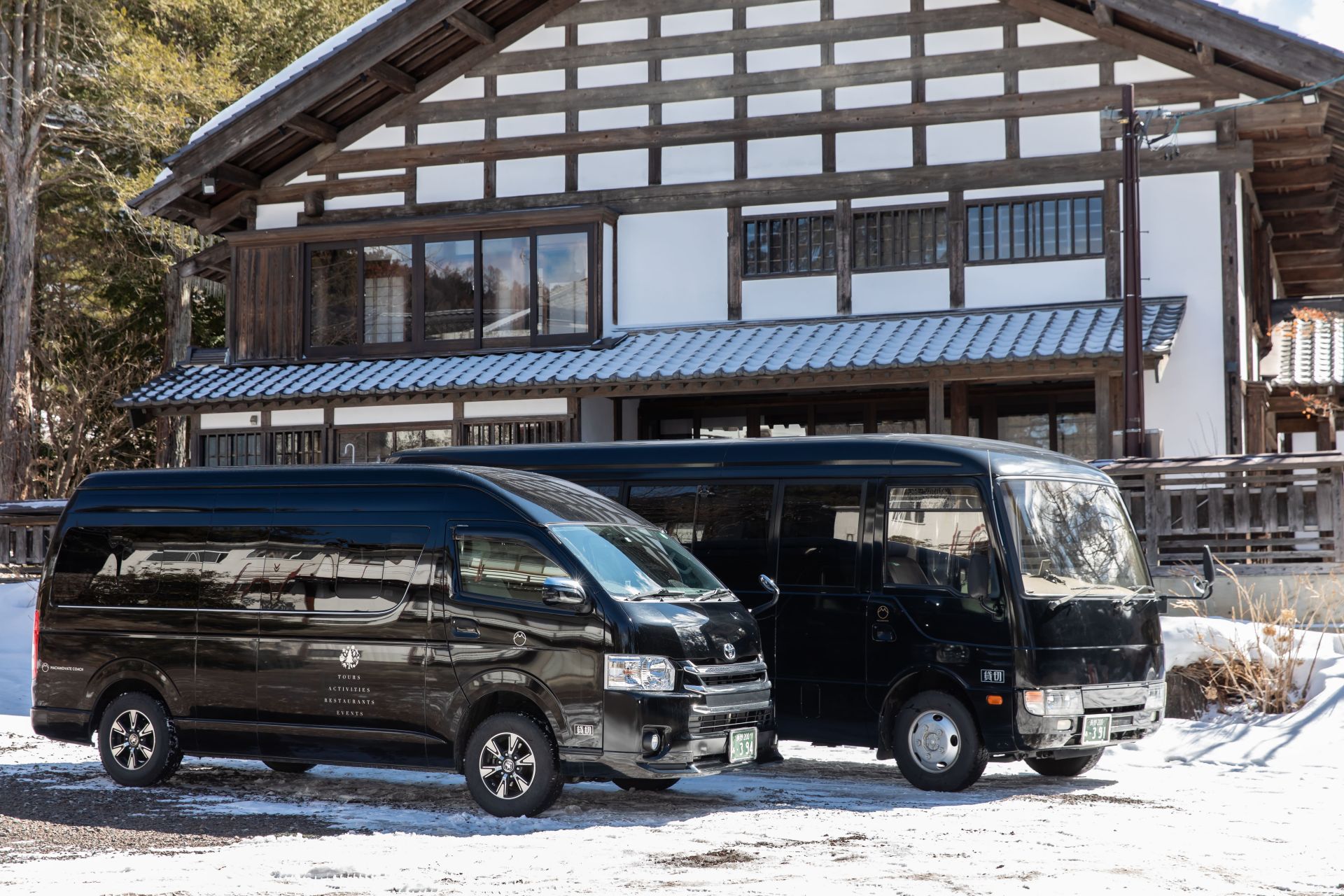
If the itinerary of the above tour isn't exactly to your liking, or you aren't in need of a guide, our private charter service is what you have been looking for. With clean, modern vehicles driven by safe and friendly drivers, we can take you wherever you would like to go around Central Japan, even as far as the international airports in Tokyo or Nagoya. You can even request a guide to make your own private tour. For more information on pricing and availability, please click HERE.














